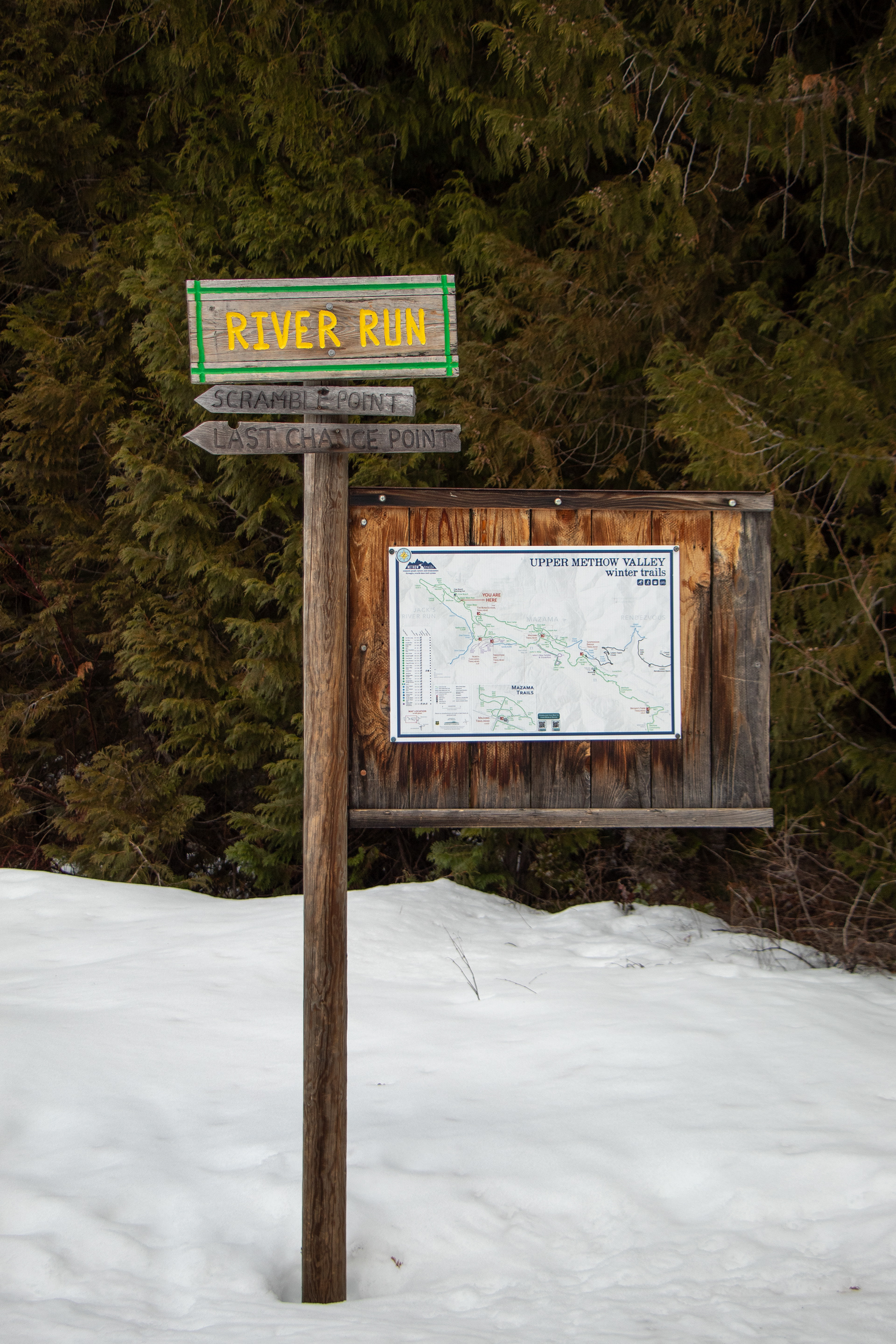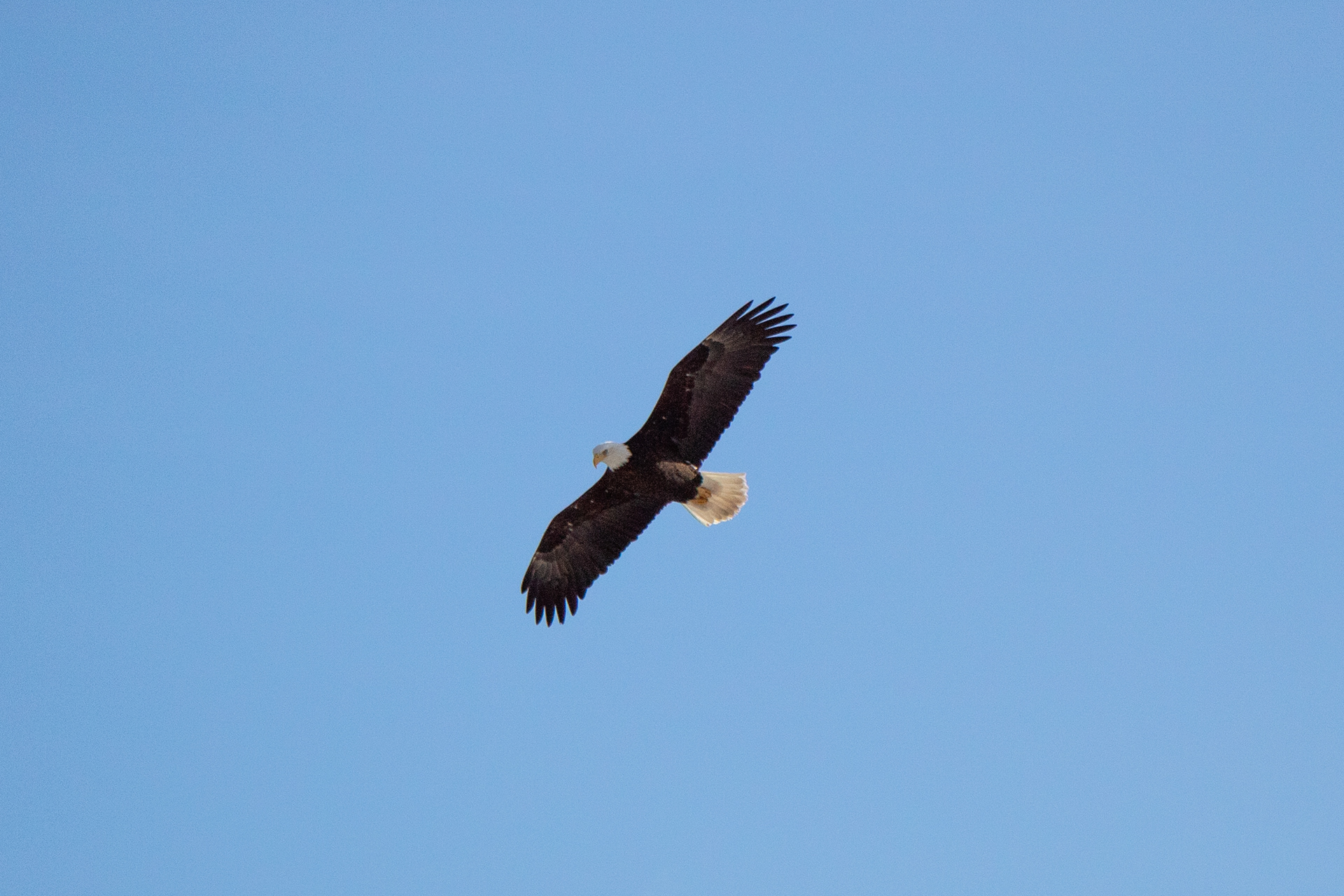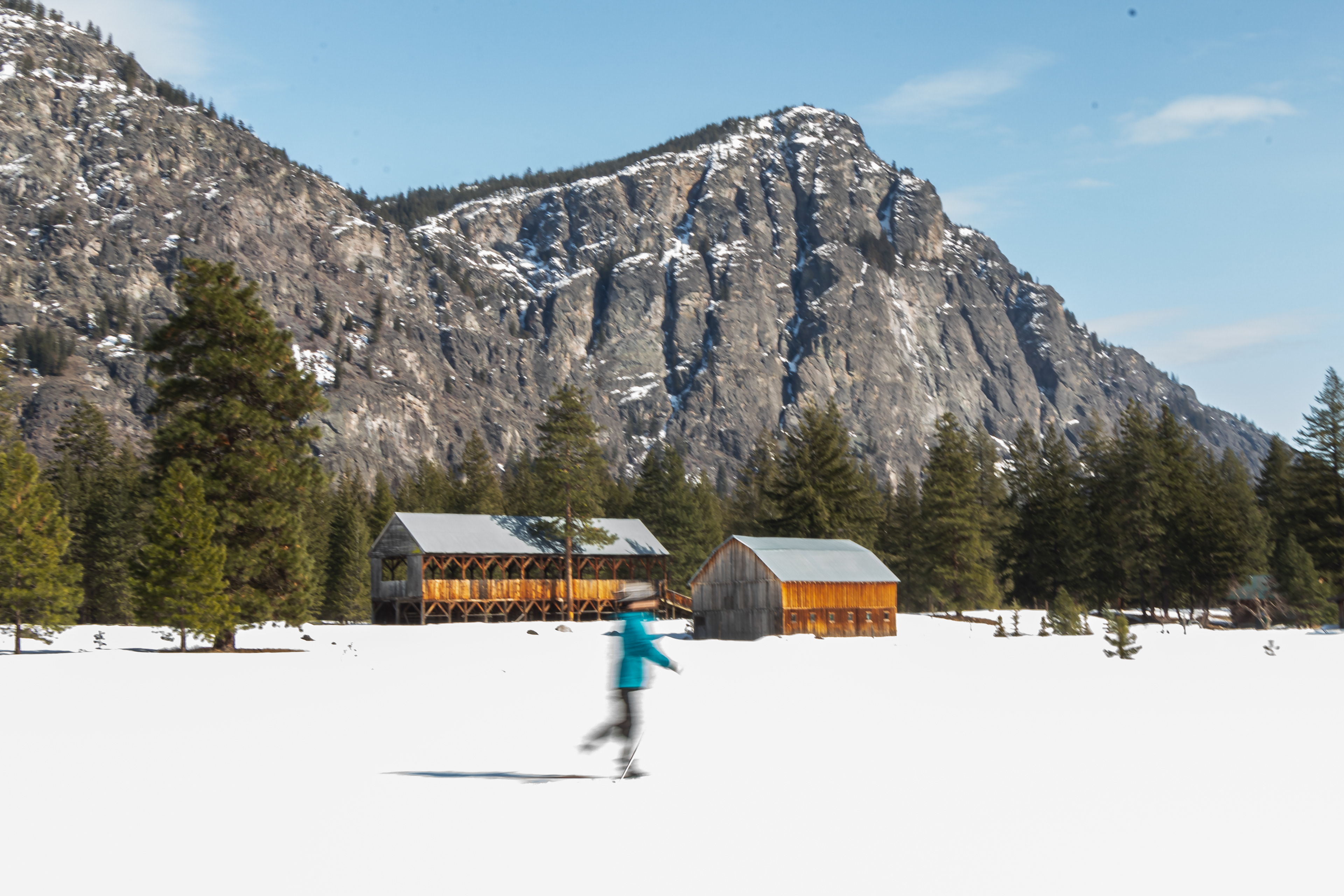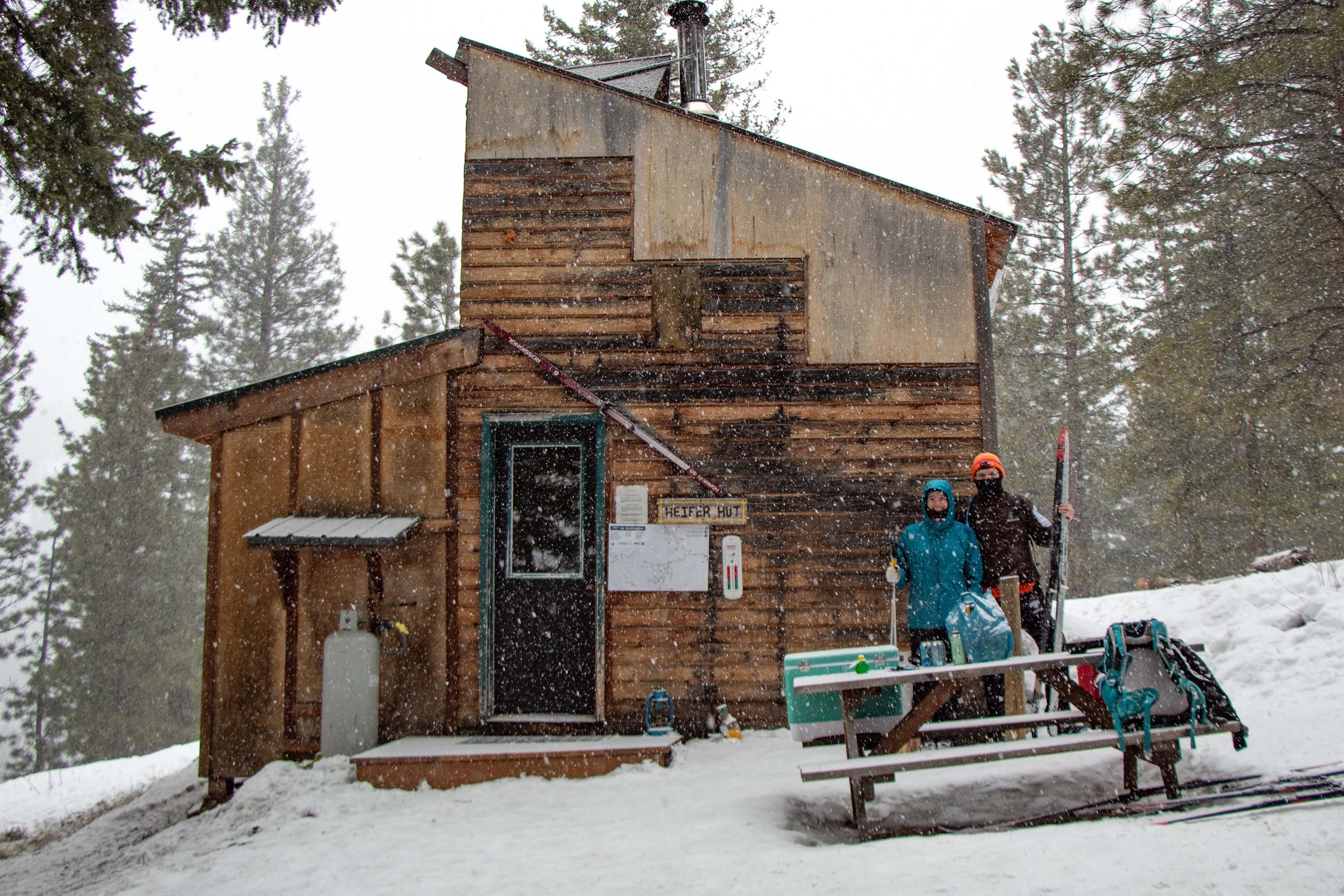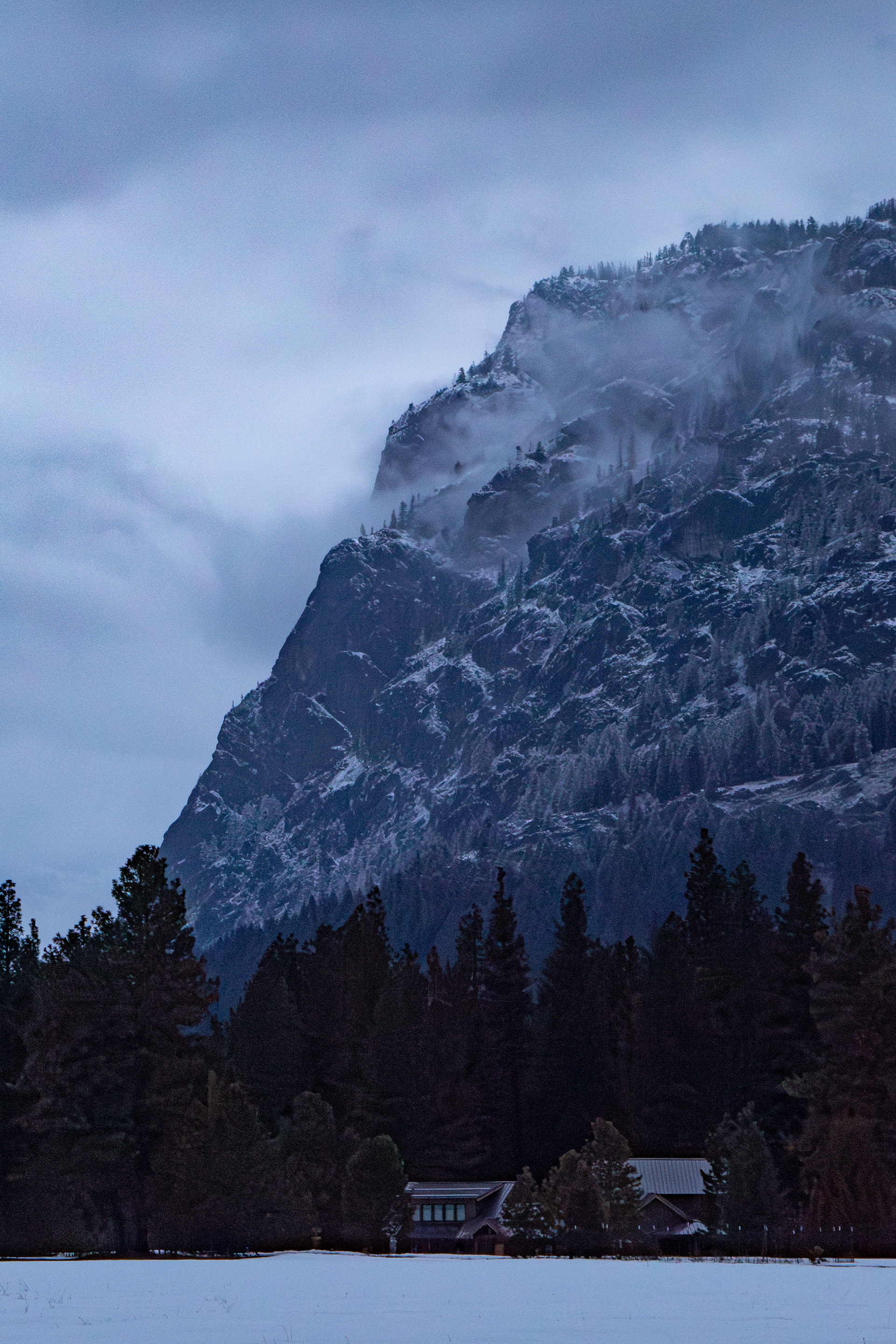Winter is a permission slip from mother nature to rest. When the frenetic energy of work and self-imposed busyness all becomes a bit too much, the off-season rolls around and encourages us to do precisely that - switch off. Whether it's the Seattle rain, Boston's Nor'Easters, or Michigan's numbing cold, I'm deeply appreciative of the environmental cue to cozy up indoors and be idle. Winter is the speed bump on my annual lap around the sun, reminding me of the value in taking things slow.
This year, however, winter was also a case study in embracing adventure in all its forms. From playing in the snow, to 2 mile sunset jaunts, to 8 mile snowshoe hikes, to 13 mile cross country ski trips down icy, occasionally terrifying trails. These adventures were rarely hyperfixated on completing any specific "objective", and more often focused on cultivating relationships and embracing conditions as they were. The trails simply served as portals to several hours of playfulness and peace.
I'm resonating with the idea of doing many things mediocrely. Releasing the need to optimize or perfect a hobby, and instead embracing sloppy surf technique, toppling over on fresh curduroy tracks, using my (little) knowledge to introduce others to beloved activities, low mileage days - fun for the sake of fun. Because frankly, it takes very little to impress me. Cascade trails which yesterday's trip reports deem "not worth it" leave me humbled and awestruck. The "worst ski conditions" in the Methow valley prove to be the best I've ever encountered, not to mention a fun challenge in overcoming barren ice patches. To play outdoors is an enormous privilege; one which is often better when approached imperfectly, openly, and vulnerably.
For the first time in years, I find myself sad to see winter ending. But alas, I can't be too sad, as our pendulum swing into 60 degree weather and sun feels like a dose of some party drug, a reminder that spring in Washington is as fantastic as winter, and that my infatuation with the PNW only grows year over year.
I'm resonating with the idea of doing many things mediocrely. Releasing the need to optimize or perfect a hobby, and instead embracing sloppy surf technique, toppling over on fresh curduroy tracks, using my (little) knowledge to introduce others to beloved activities, low mileage days - fun for the sake of fun. Because frankly, it takes very little to impress me. Cascade trails which yesterday's trip reports deem "not worth it" leave me humbled and awestruck. The "worst ski conditions" in the Methow valley prove to be the best I've ever encountered, not to mention a fun challenge in overcoming barren ice patches. To play outdoors is an enormous privilege; one which is often better when approached imperfectly, openly, and vulnerably.
For the first time in years, I find myself sad to see winter ending. But alas, I can't be too sad, as our pendulum swing into 60 degree weather and sun feels like a dose of some party drug, a reminder that spring in Washington is as fantastic as winter, and that my infatuation with the PNW only grows year over year.
Gold Creek Pond| 1.0 - 4.5 miles | 10 ft
A short, sweet, and flat hike do-able year round. A Sno-Park Permit ($25/day or $50 for the season) is required to park at the trailhead; be warned, whoever is in charge of ticketing is VIGILANT.
The trail sees tons of foot traffic, which keeps the snow packed down almost all winter. Unless you're coming immediately after a huge snowfall, good boots or microspikes are usually sufficient. This may also be Washington's most popular elopement spot; I have literally seen a couple (sometimes multiple couples!) eloping or getting engaged on the shore 3/3 times I've visited. You can hike 1.4 miles roundtrip to the edge of a (usually frozen) Gold Creek Pond nestled below Kendall Peak, extend it to a 2.8 mile loop around the pond for a bit more solitude, or even make it a 4.5 mile adventure and continue on to Heli's Pond.
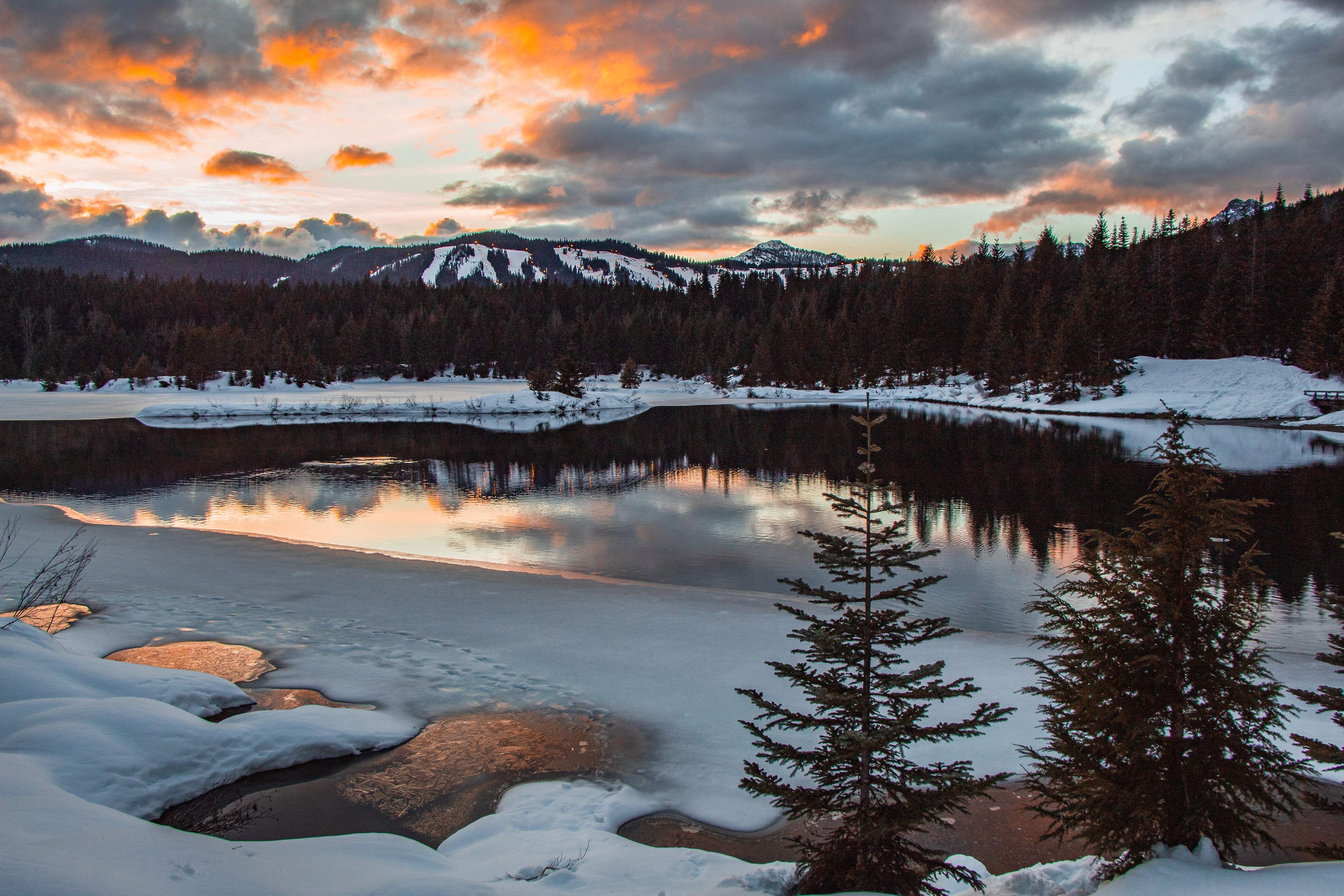

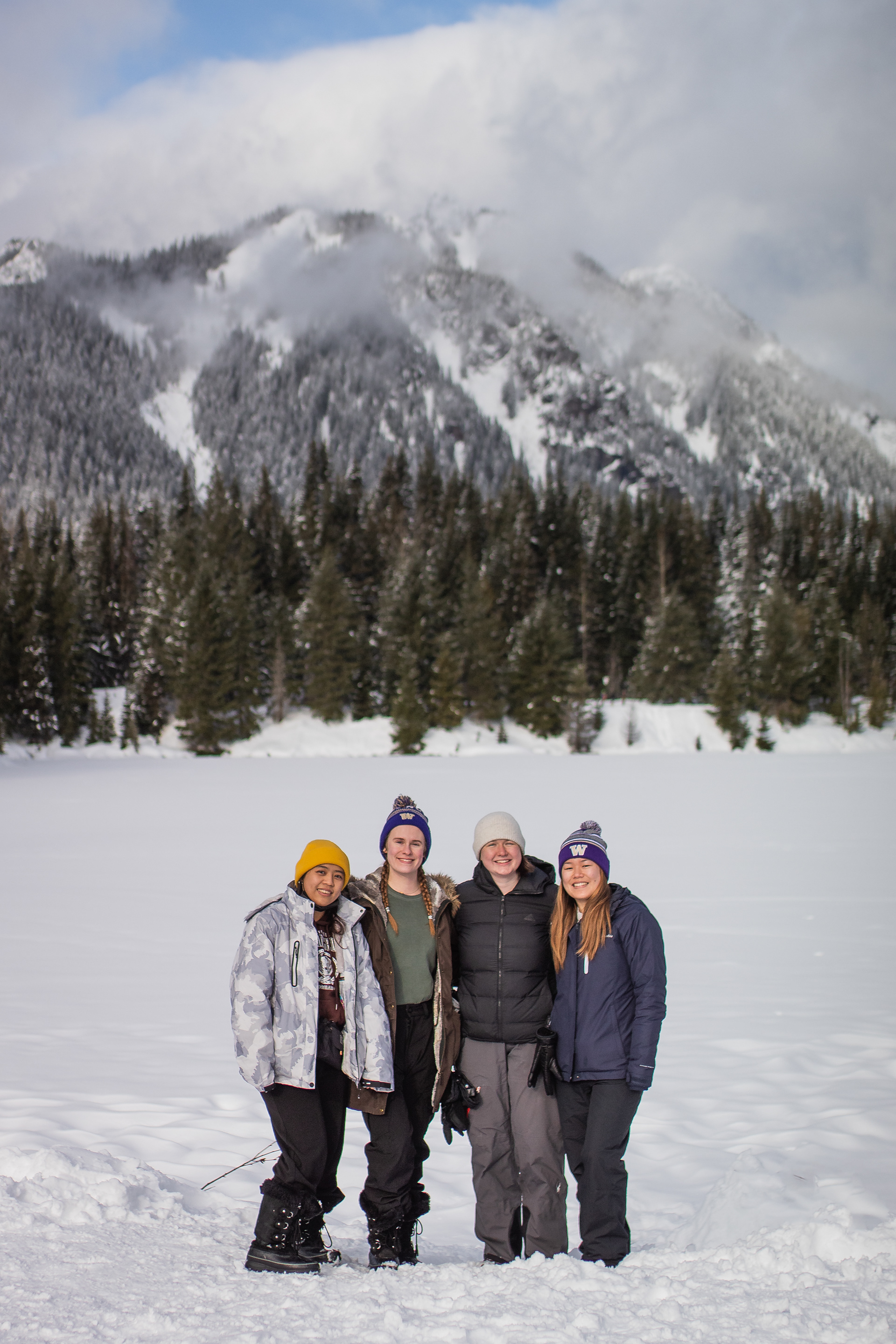
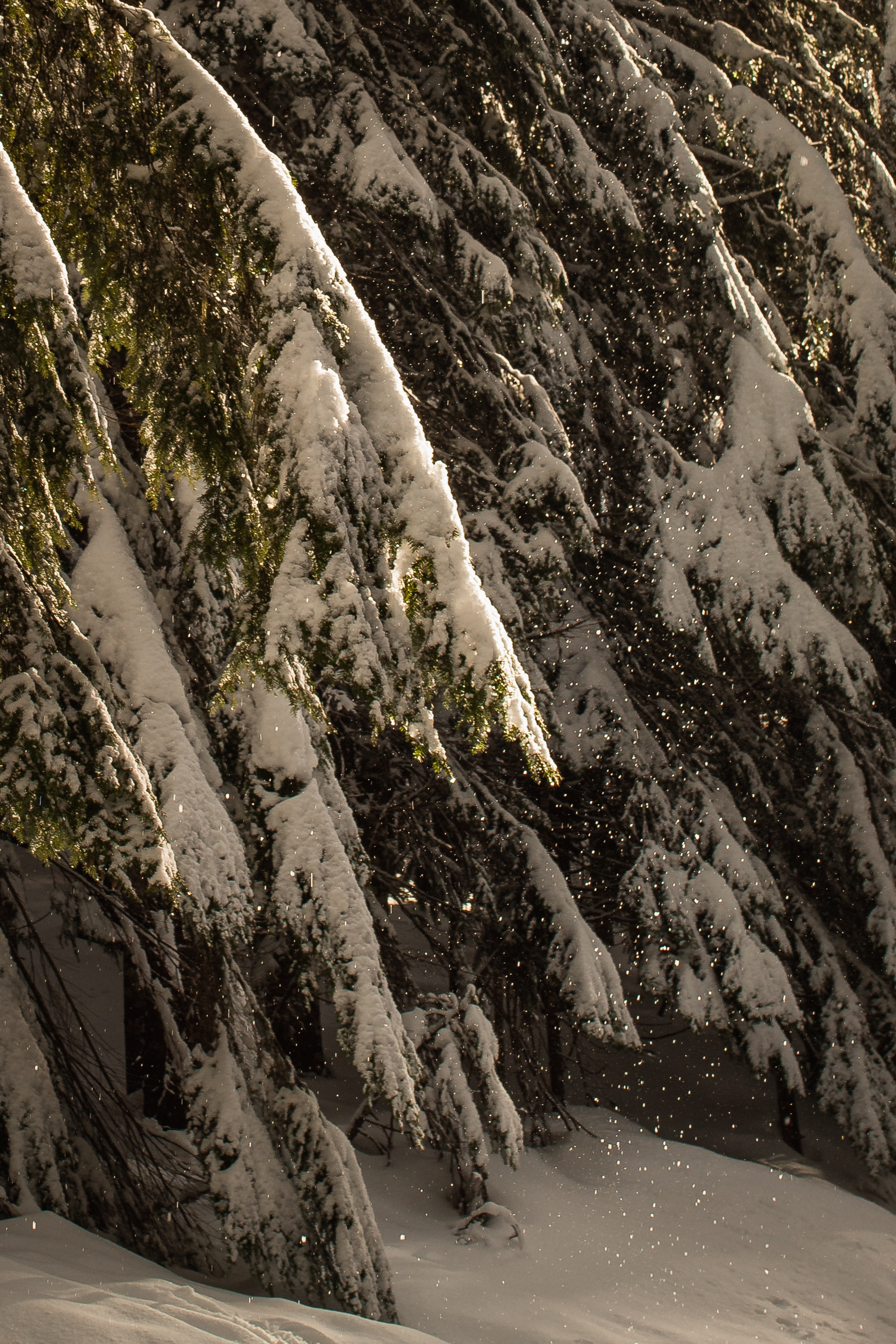


Skyline Lake | 3.5 miles | 1,500 ft
A short and sweet snowshoe that departs from Steven's Pass. The journey to Skyline Lake is relentlessy uphill, but more than makes up for it with views of the valley and surrounding mountains from the get go. While the trail ends at the lake, following the east perimeter of the lake and then heading slightly northwest for several hundred more feet of elevation gain brings you up to Skyline Ridge, which provides an even better vantage point and a boulder garden cloaked in snow.
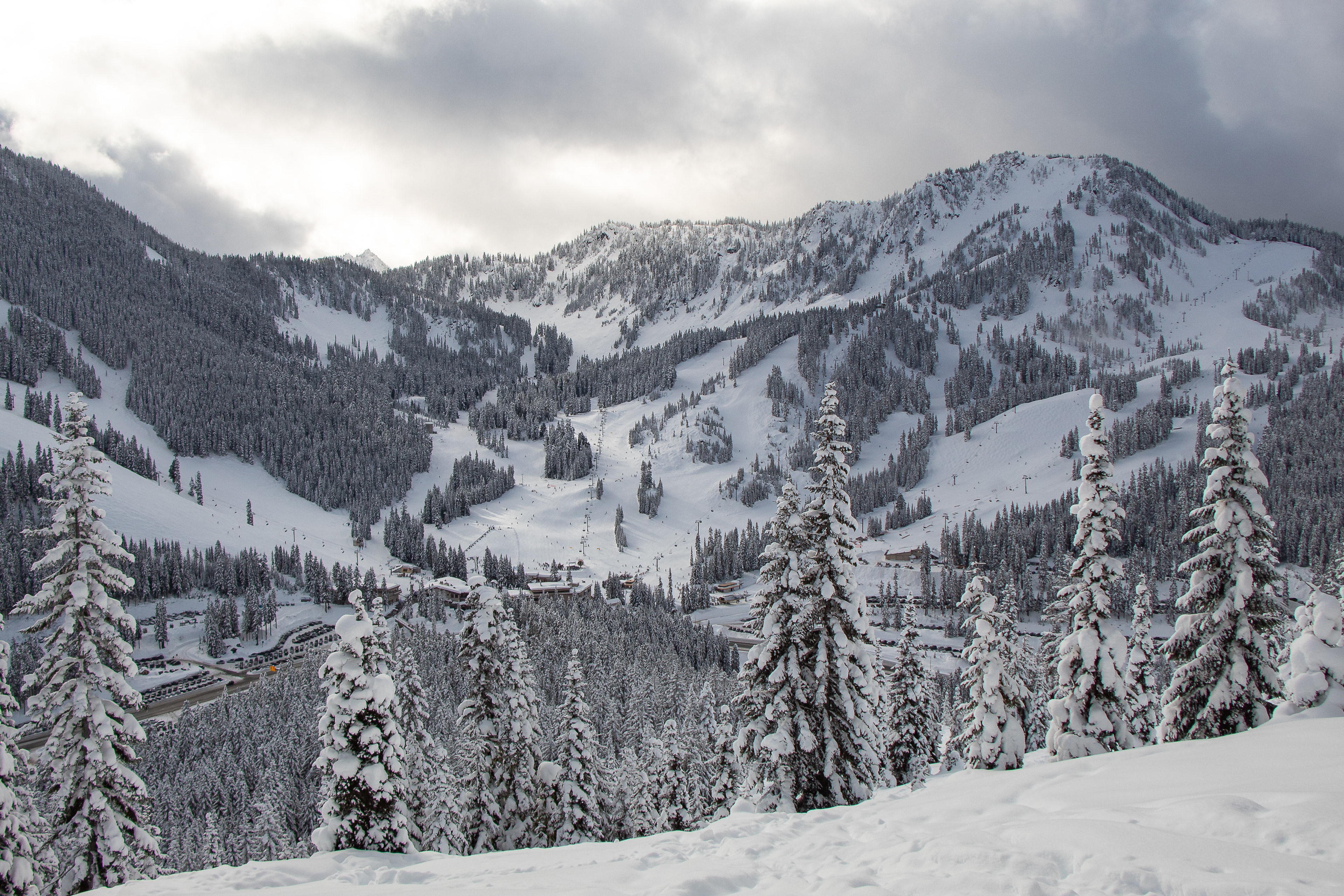
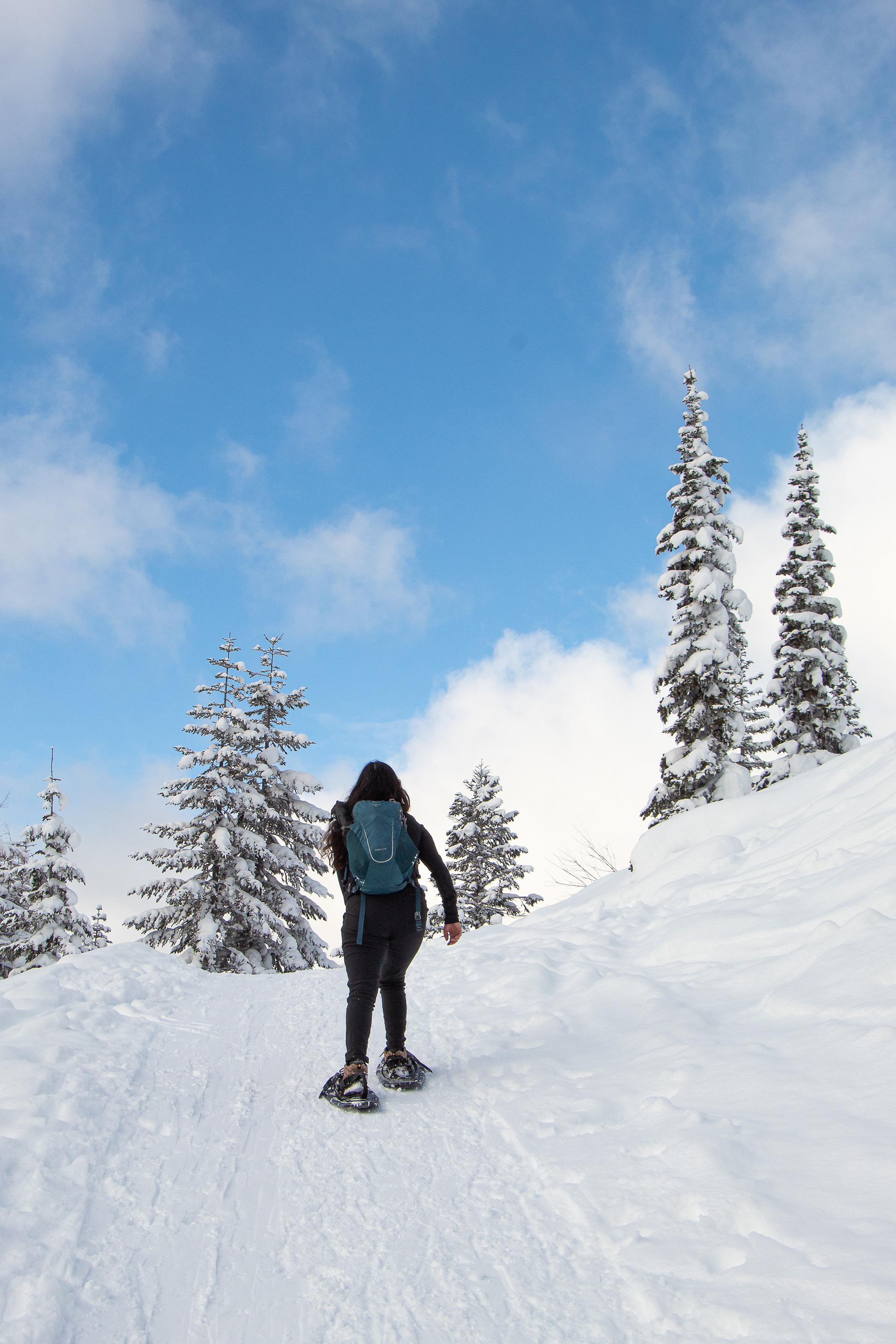
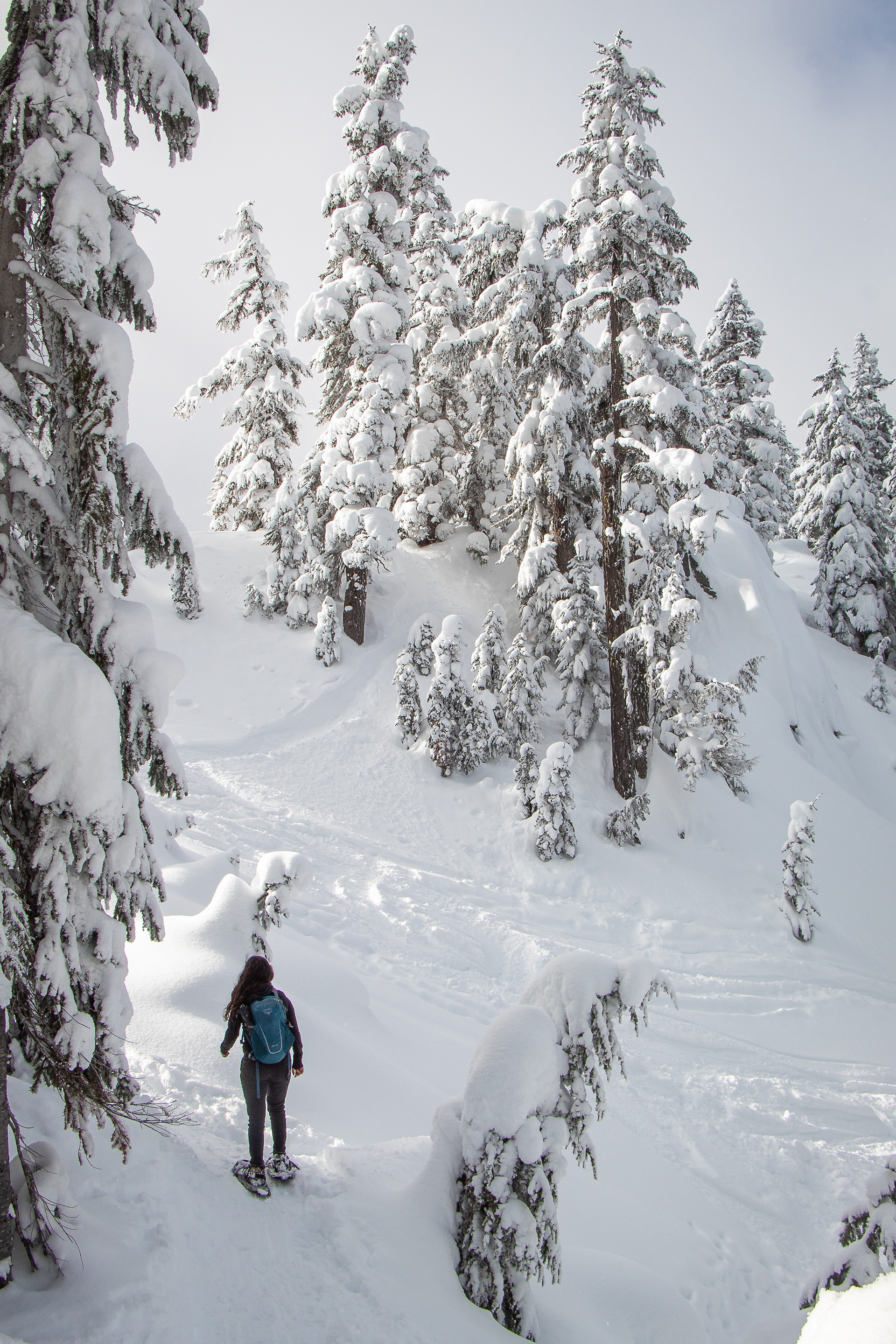

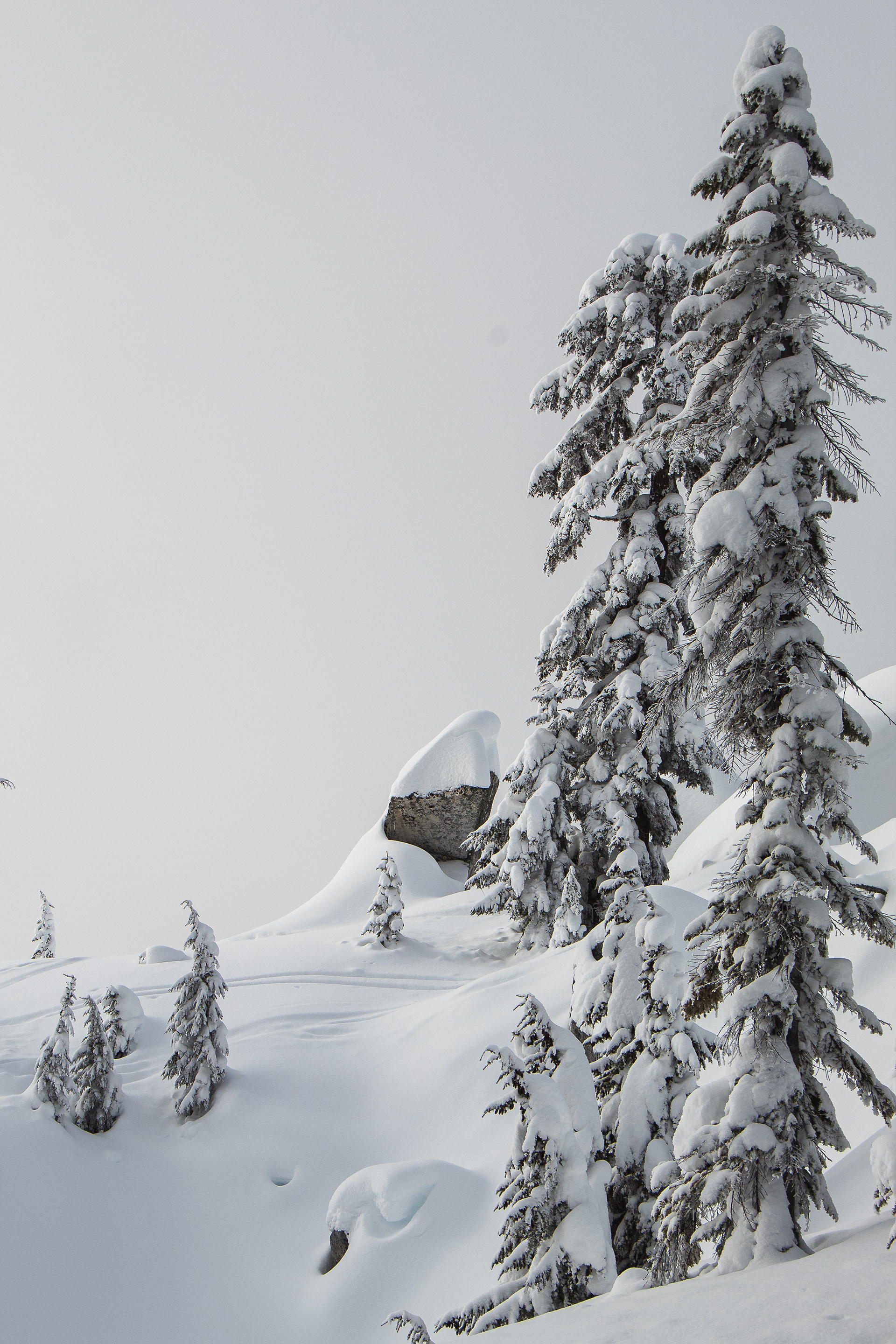
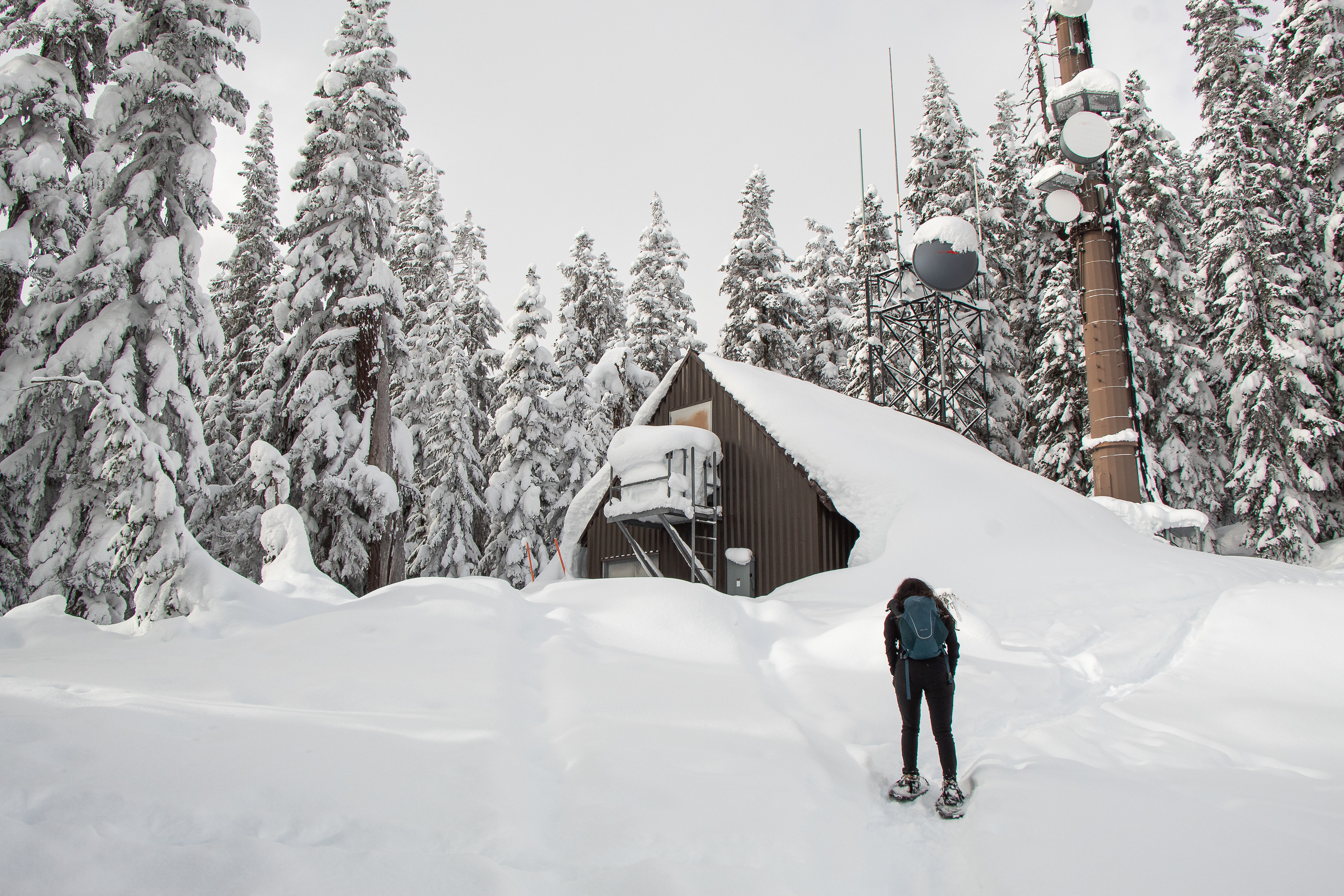
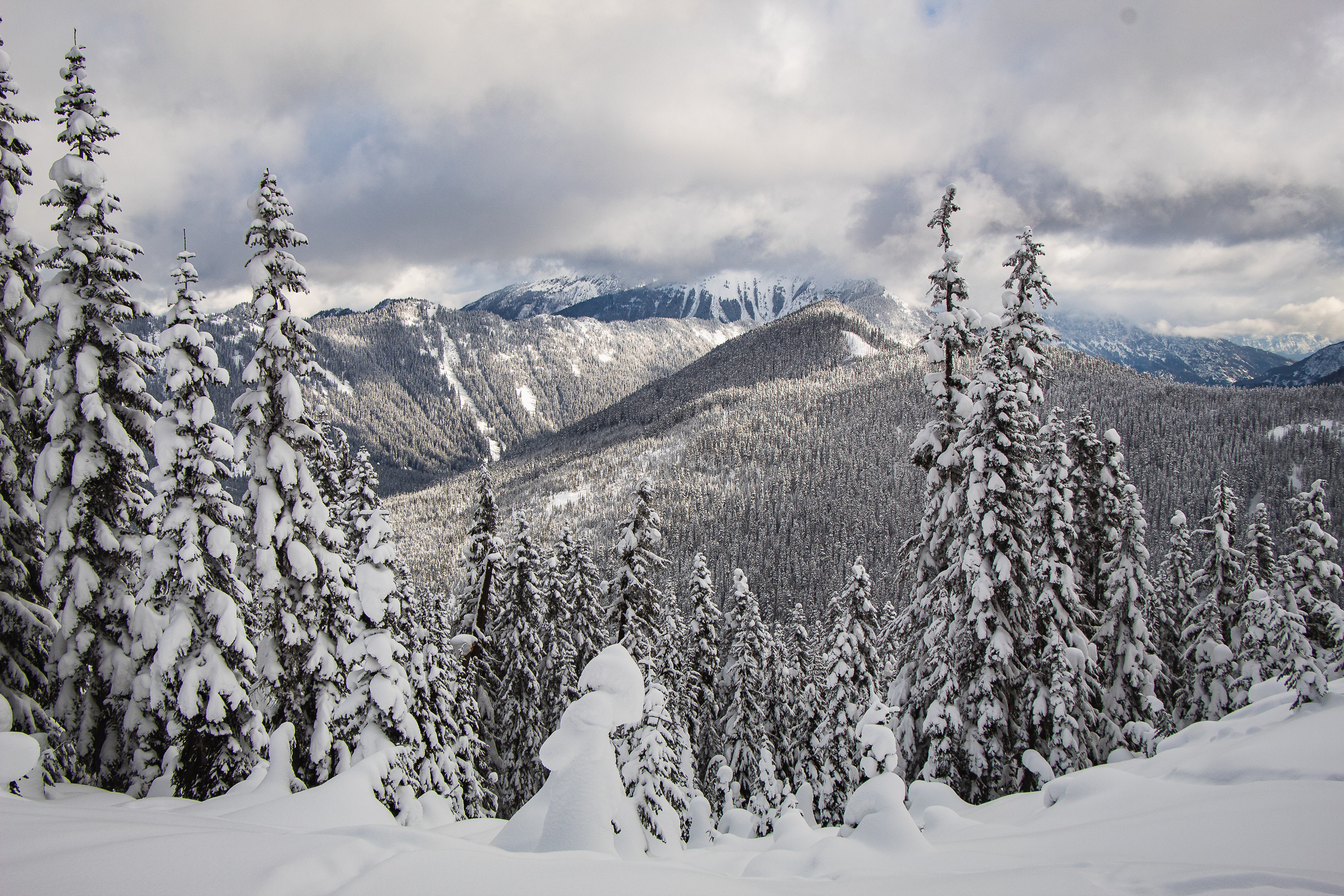
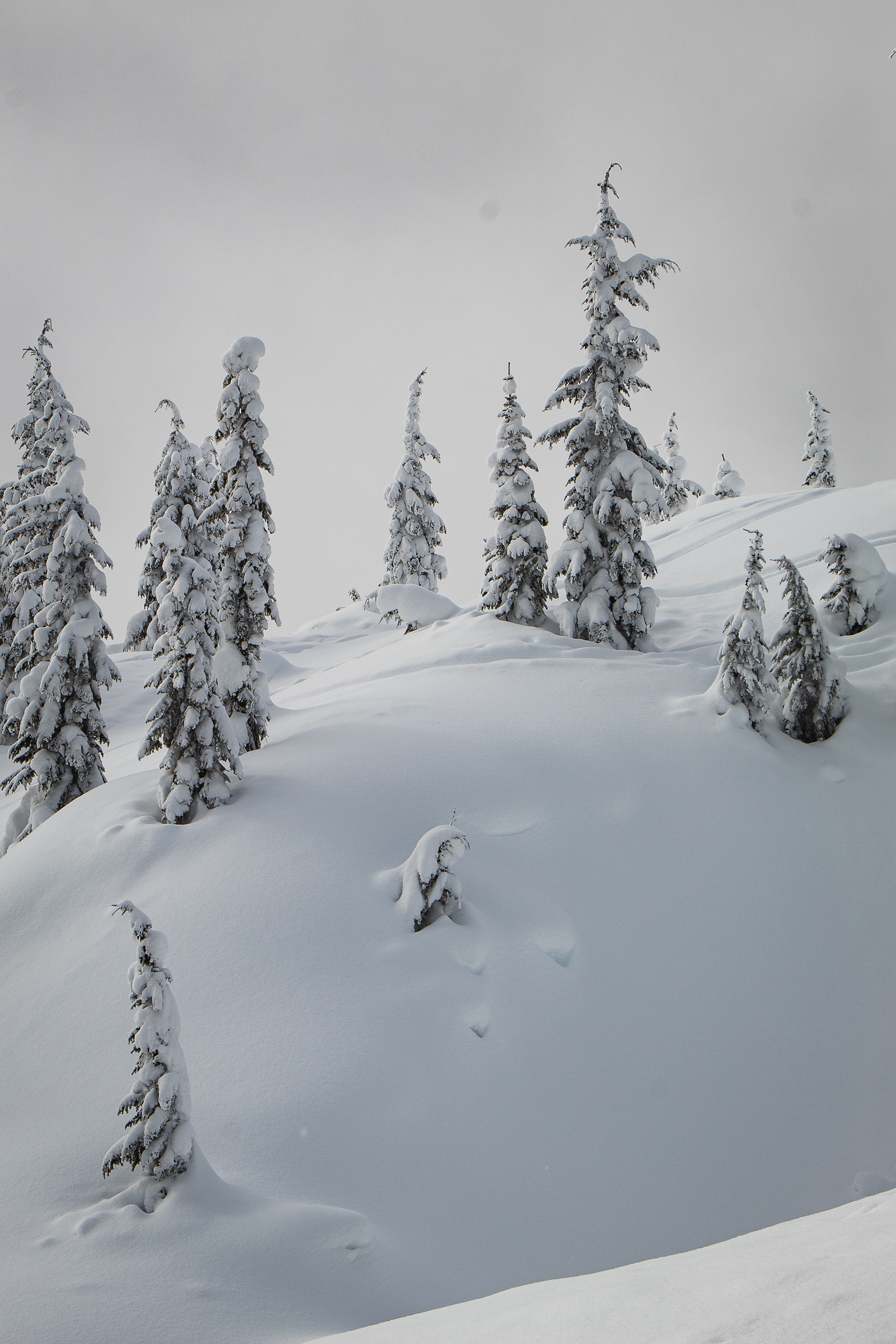
Panaroma Point | 3.8 miles | 1,322 ft
This trail departs from Paradise, the only region of Mt. Rainier National Park (MRNP) which remains open year round. An MRNP day pass or America the Beautiful Pass is required. Mt. Tahoma is glorious in all seasons, but I'm partial to visiting the national park in winter to avoid the crowds, bugs, and entrance lines - not to mention the new drive-in reservation system beginning in the summer of 2024.
The winding drive to Paradise is a tour of ecosystems, beginning in verdant PNW forests and ultimately emerging into an alpine snowscape. Be sure to check road conditions. The road does sometimes close in adverse weather, and tire chains may be recommended. This is one of the snowiest areas in North America - averaging 670 inches a year!! - so snowshoes are a necessity. Otherwise, it's pretty mellow, and was one of the first snowshoe trips we attempted. It felt less like a hike and more like a frolic through a snow-laden alpine field; on our first attempt we didn't even make it to Panorama Point, yet still had a spectacular time. The trails can be hard to follow (considering most signposts are buried under tens of feet of snow), so offline navigation is recommended, especially when a cloud decides to engulf you 1 mile into the hike (photo #6).
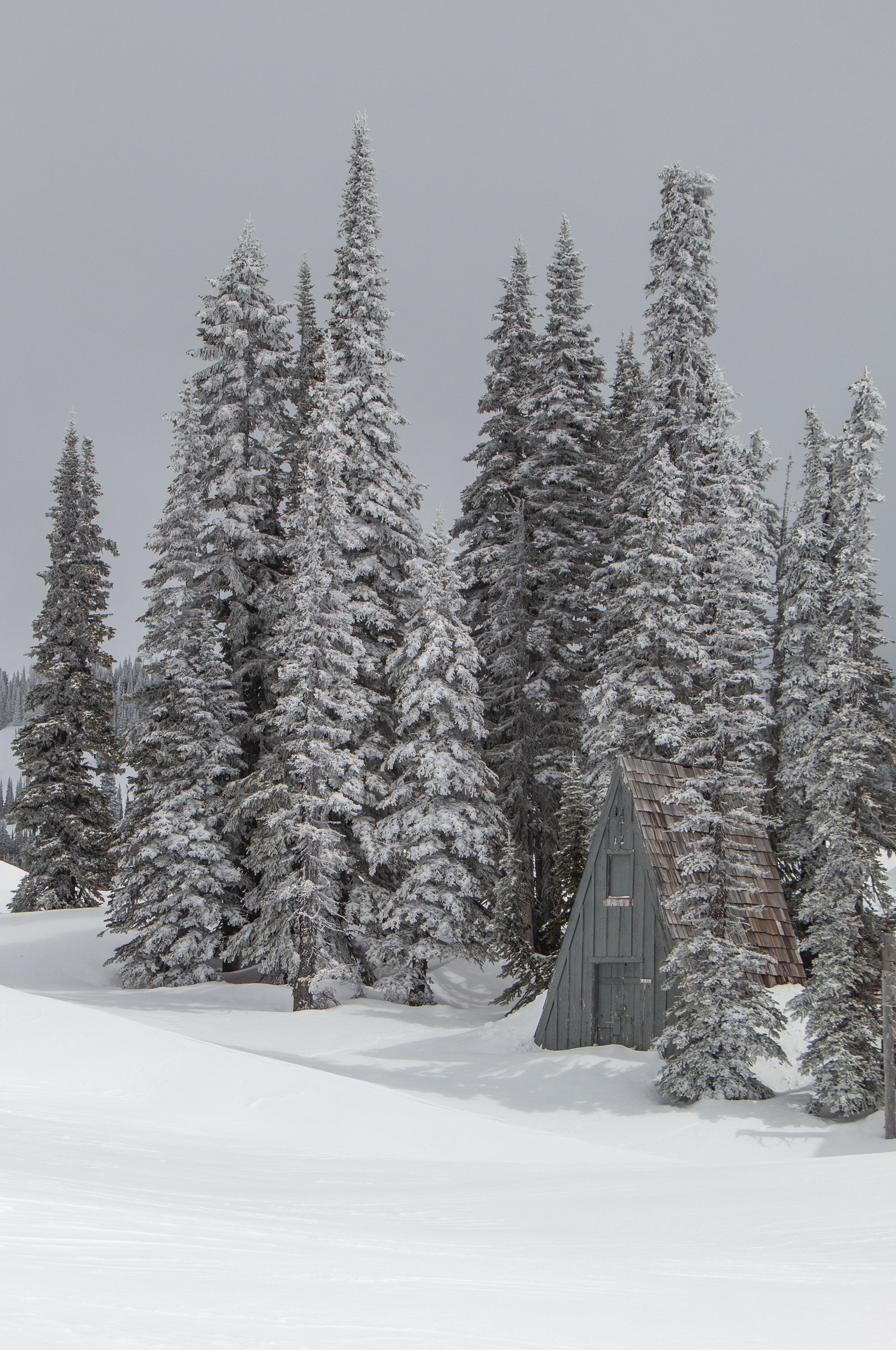


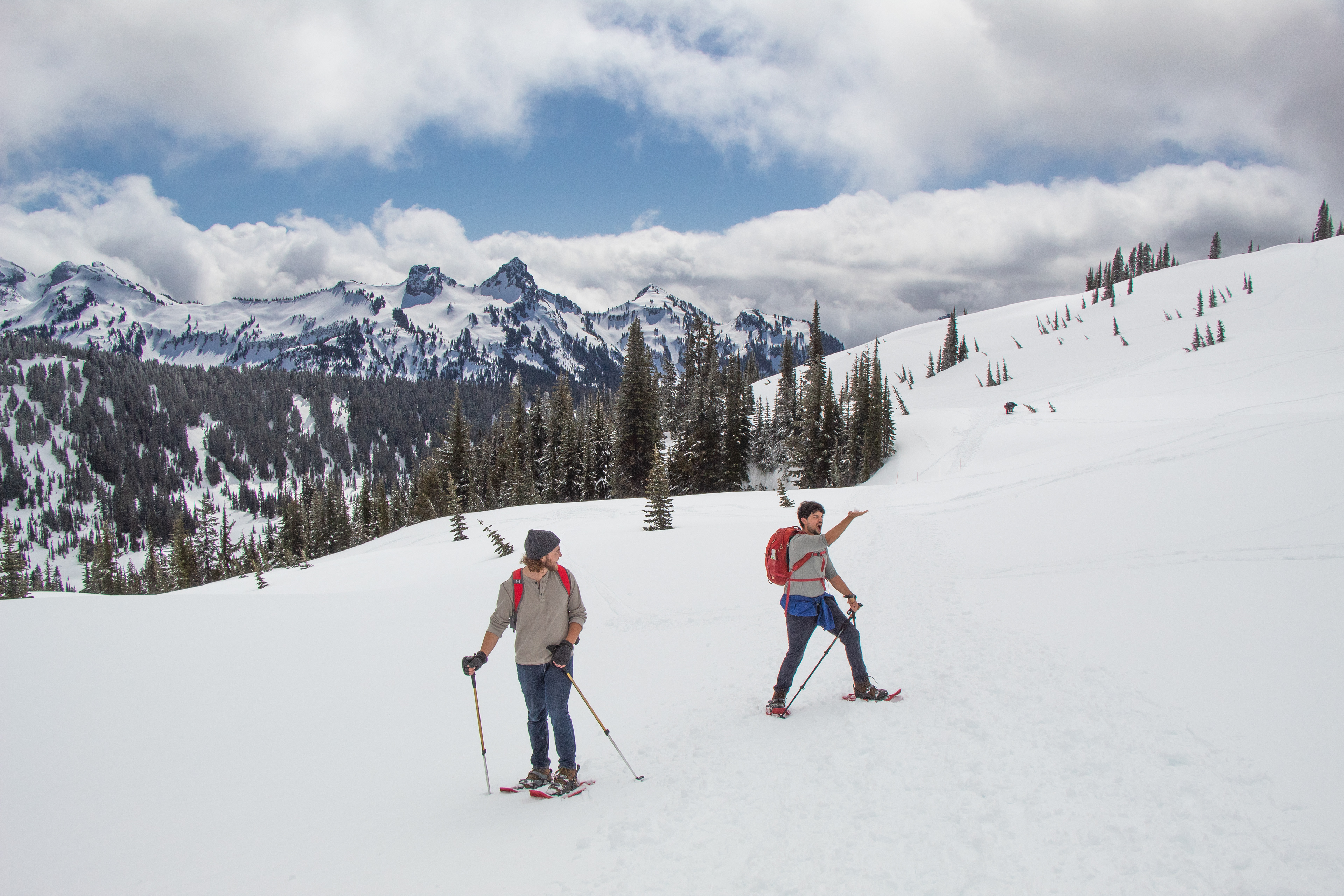

Can you spot the tiny human at Mt. Tahoma's flanks?
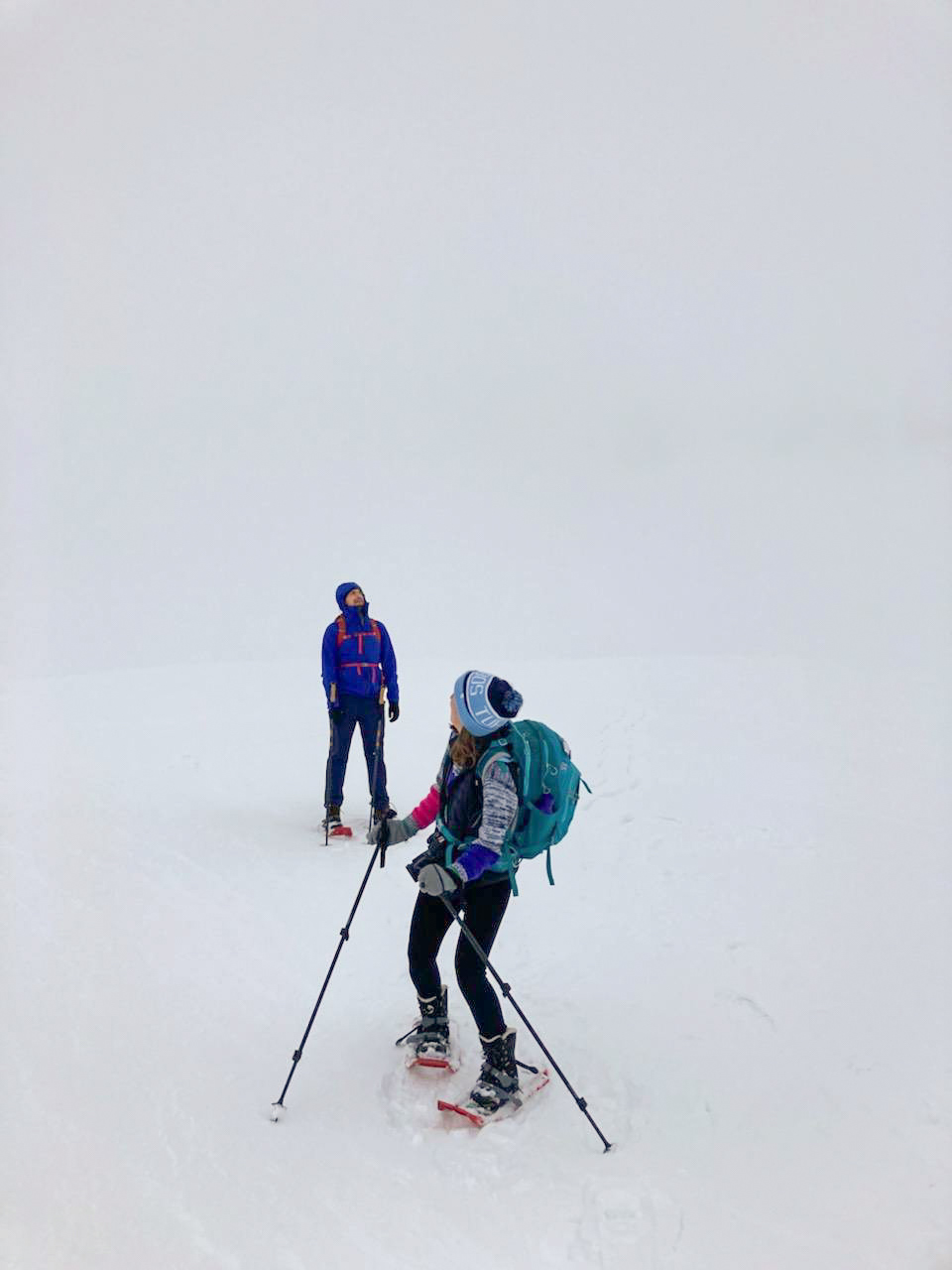

Artist Point | 4.4 miles | 980 ft
Avalanche Risk.
Artist Point is quite possibly my favorite spot in Washington State, and has proven equally magical in winter and summer.
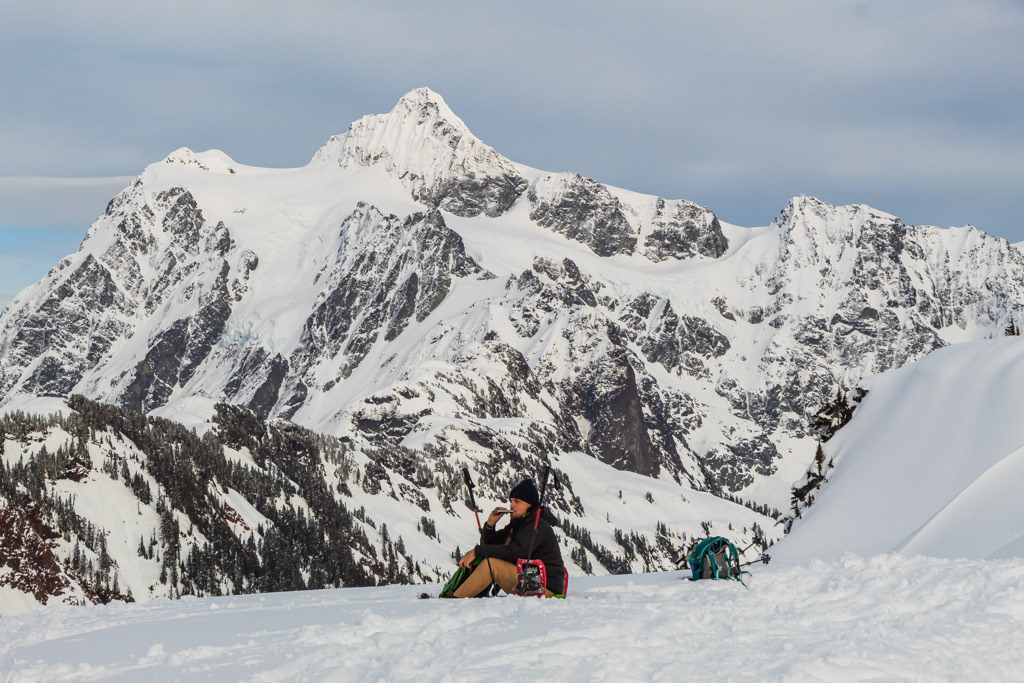


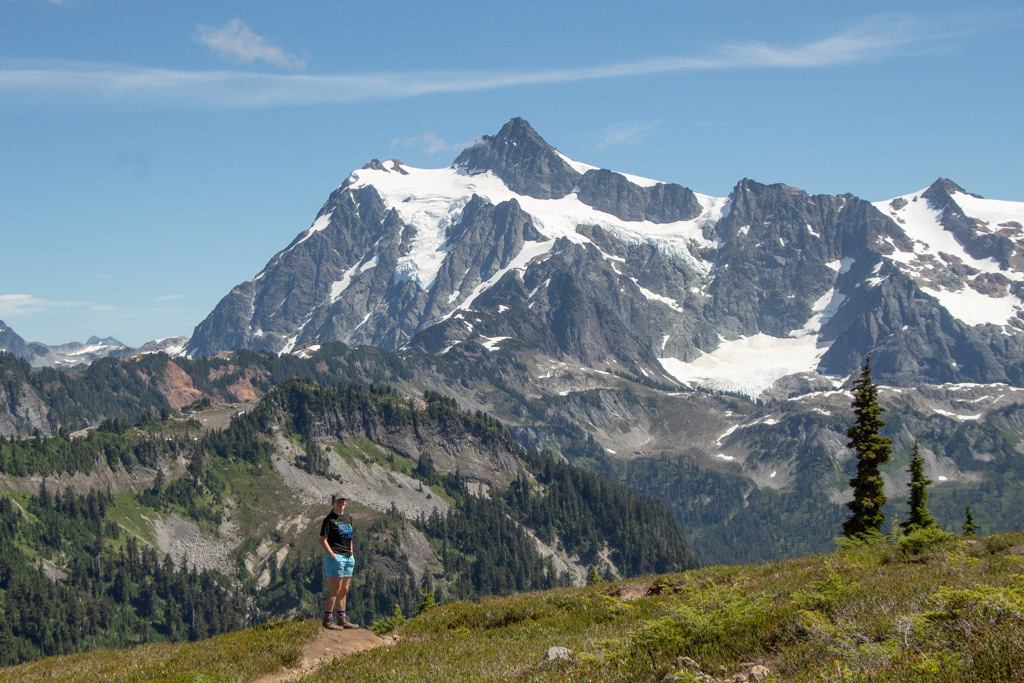


This trail does come with risk; this is the first hike on this list that passes through avalanche-prone territory. Be sure to check (and understand) the Northwest Avalanche Forecast before heading out, and download the GPS route for the winter snowshoe route. The easiest way to get into trouble here is to mistakenly follow the summer road, which passes directly underneath some quite avalanche-prone cliffs.
Should the stars align for a good weather window and decent snow conditions, this snowshoeing route is absolutely unrivaled, with views of Mt. Baker (Koma Kulshan), Mt. Shuksan, Table Mountain, and the surrounding North Cascades in every direction.
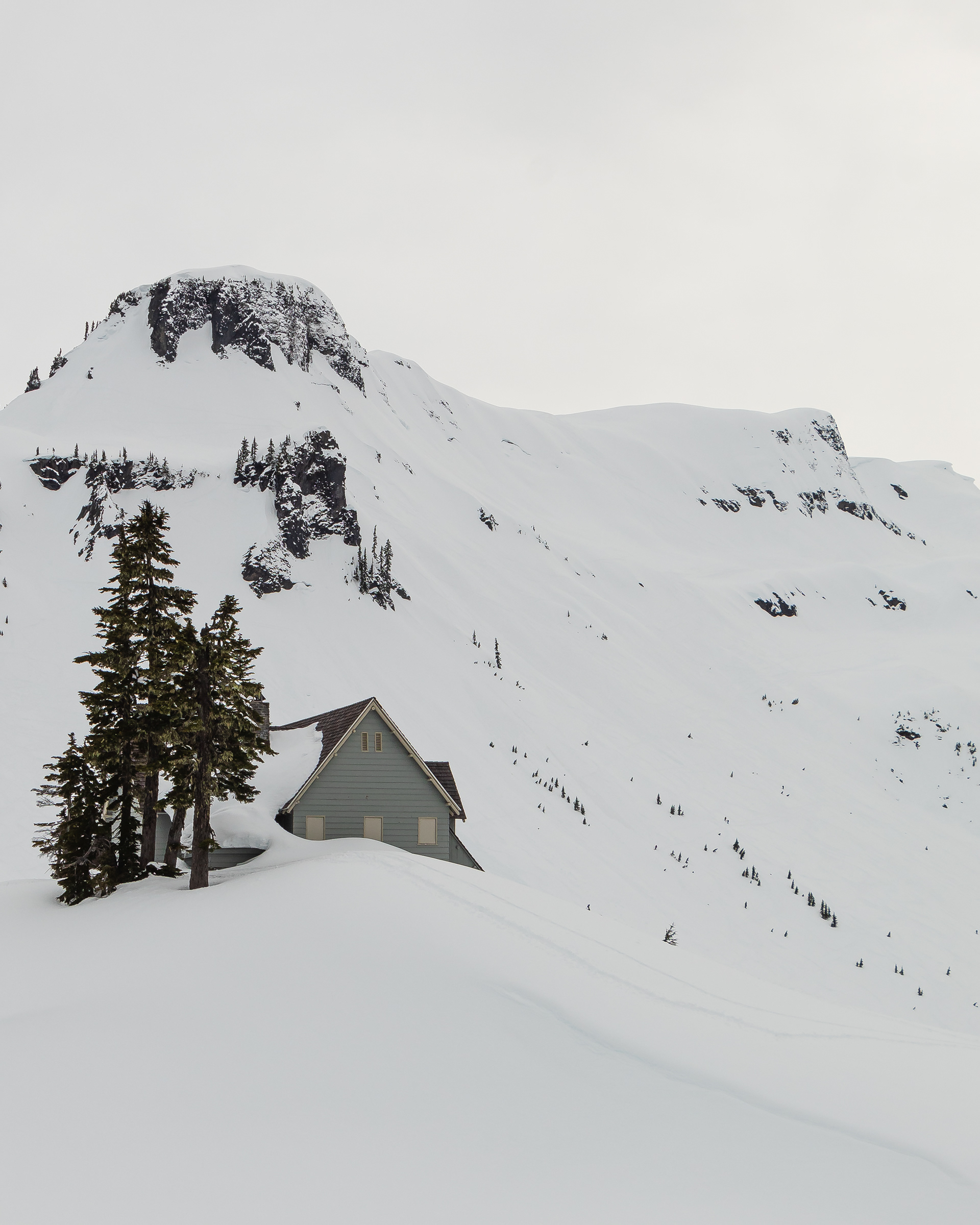
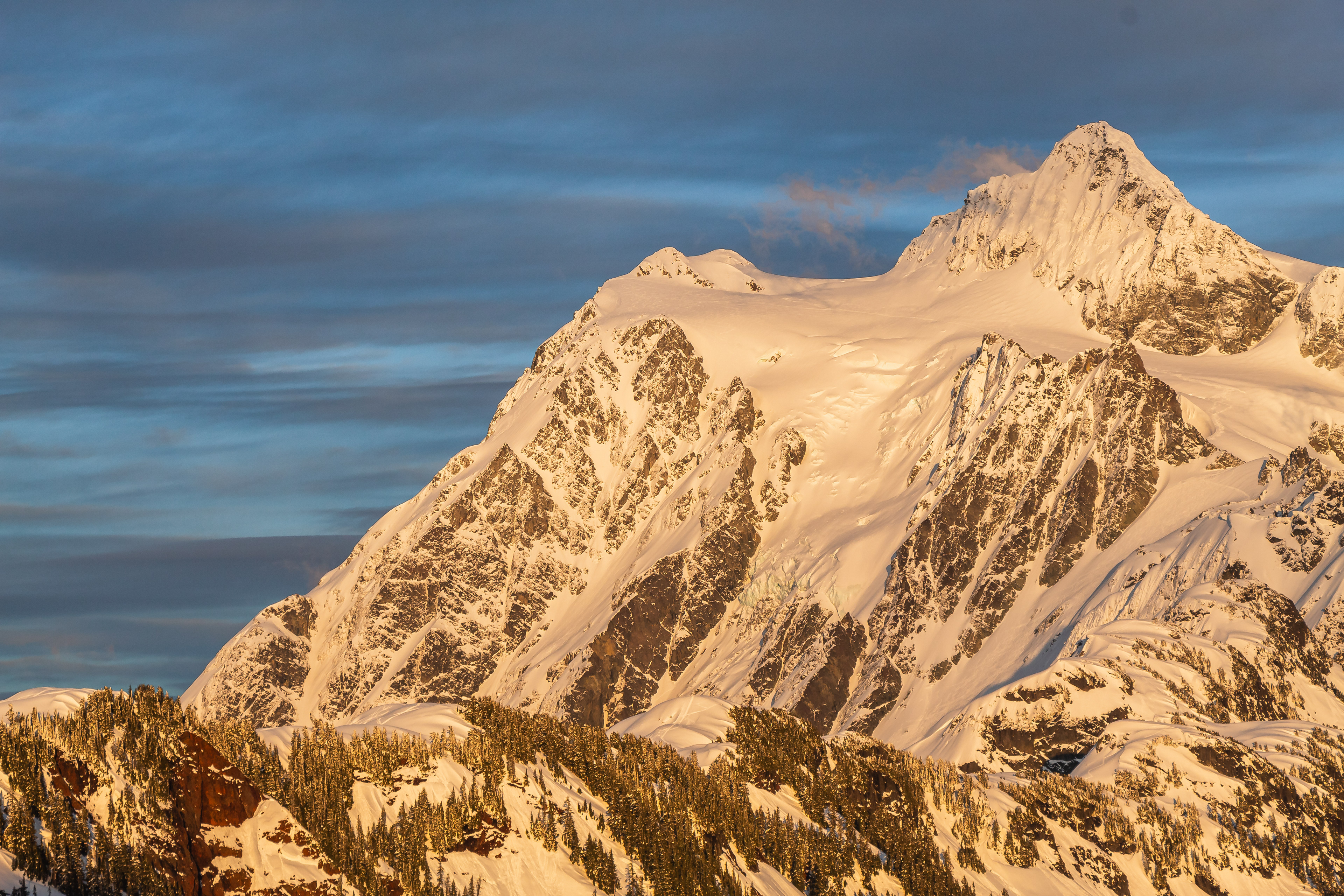
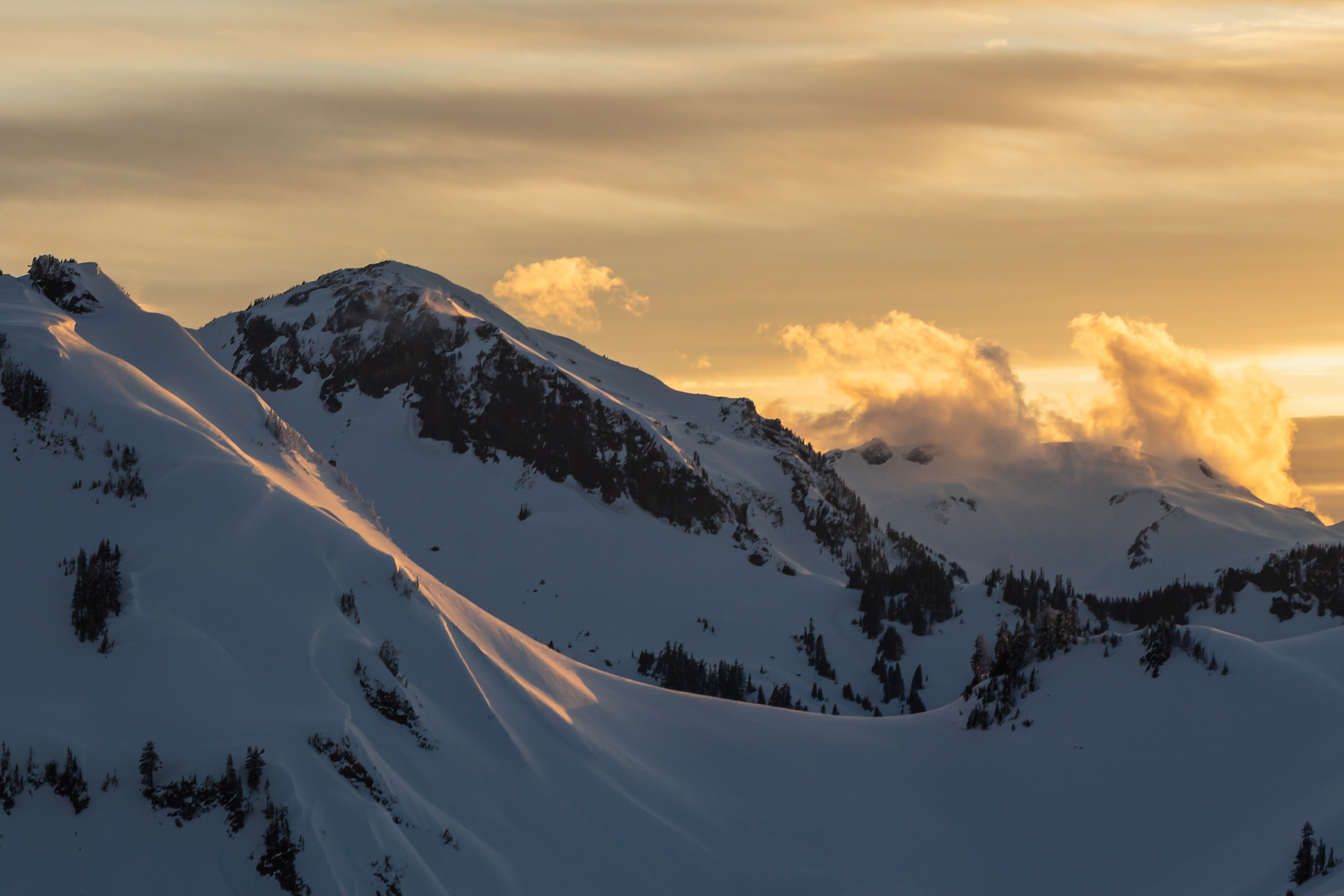
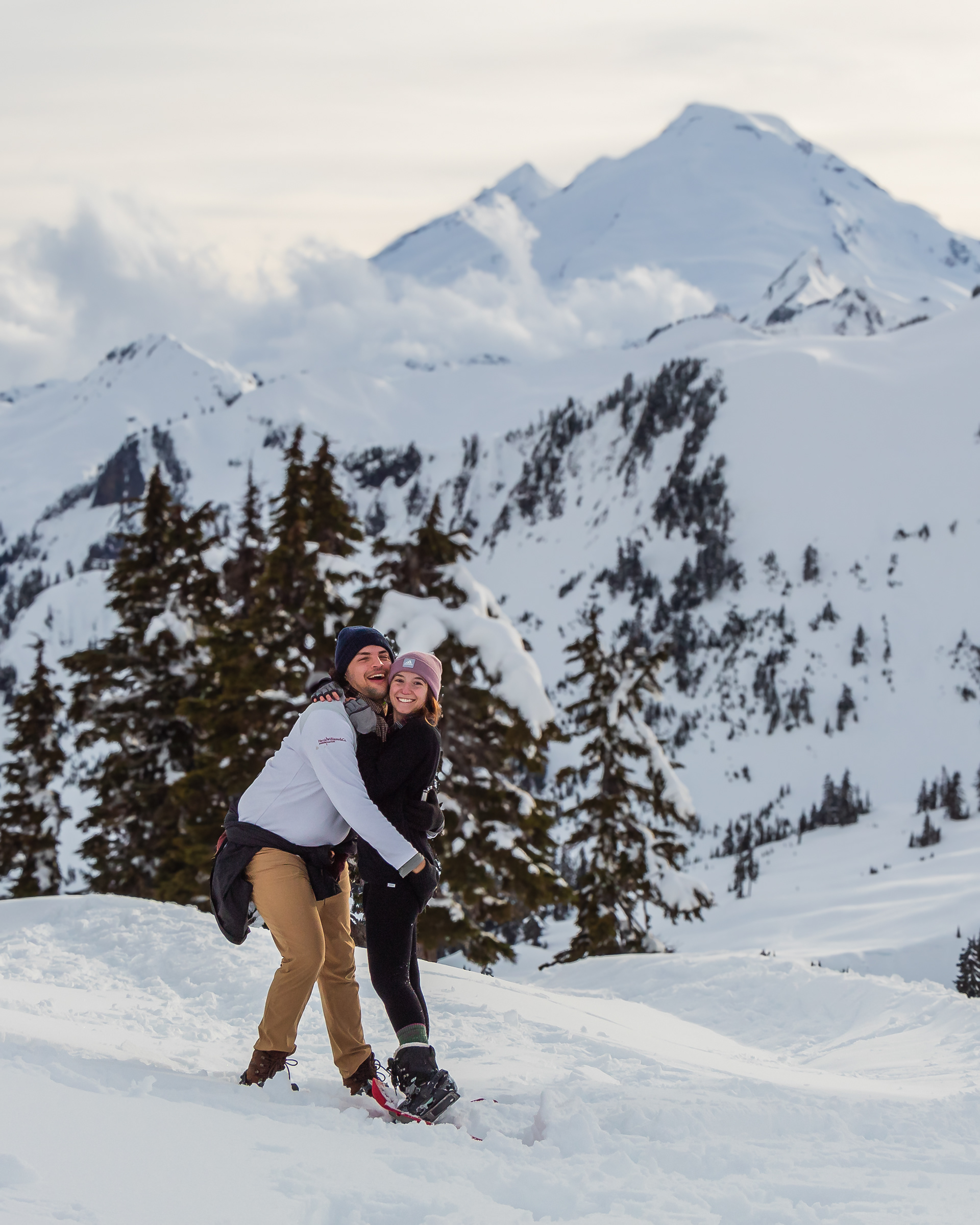

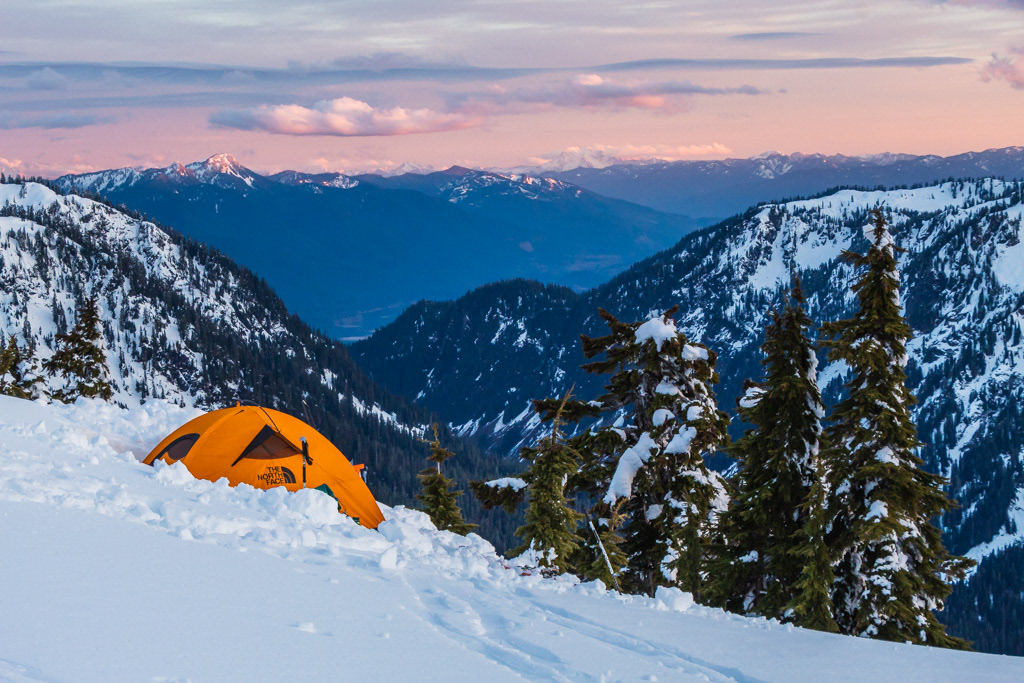
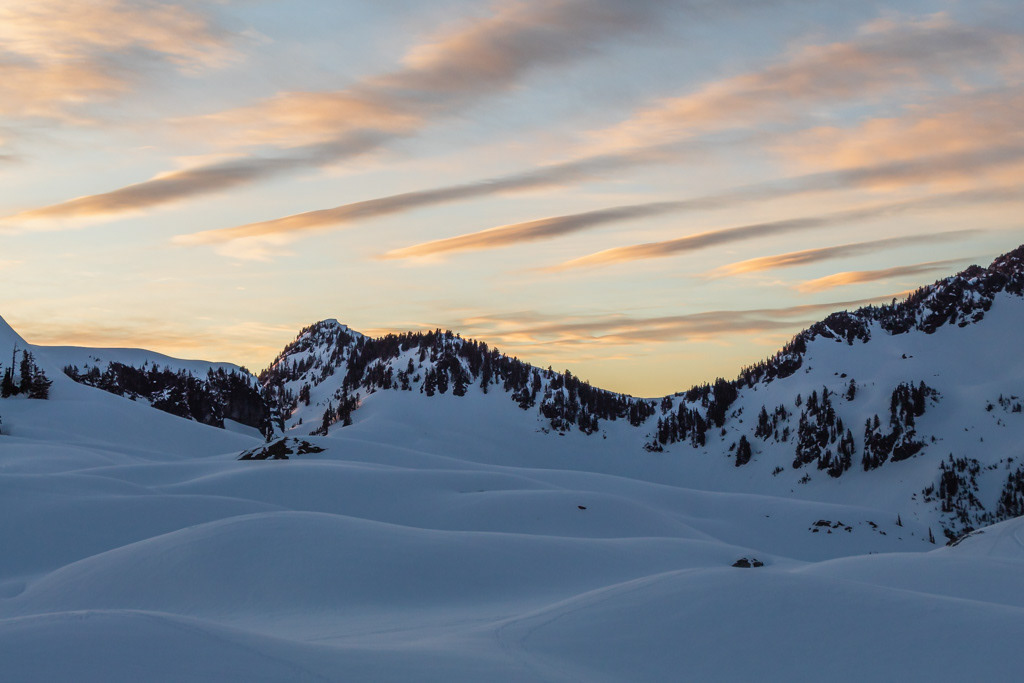
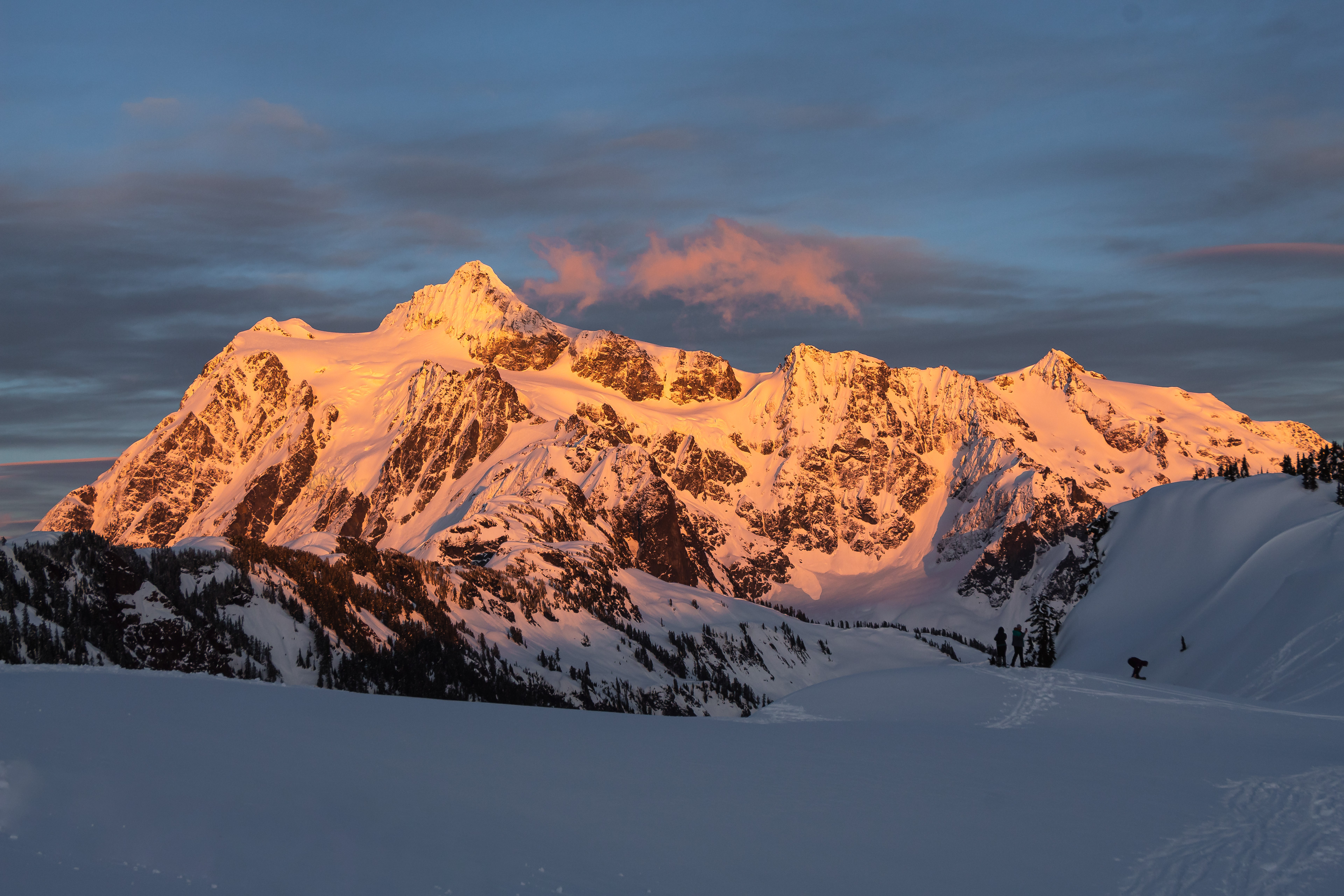
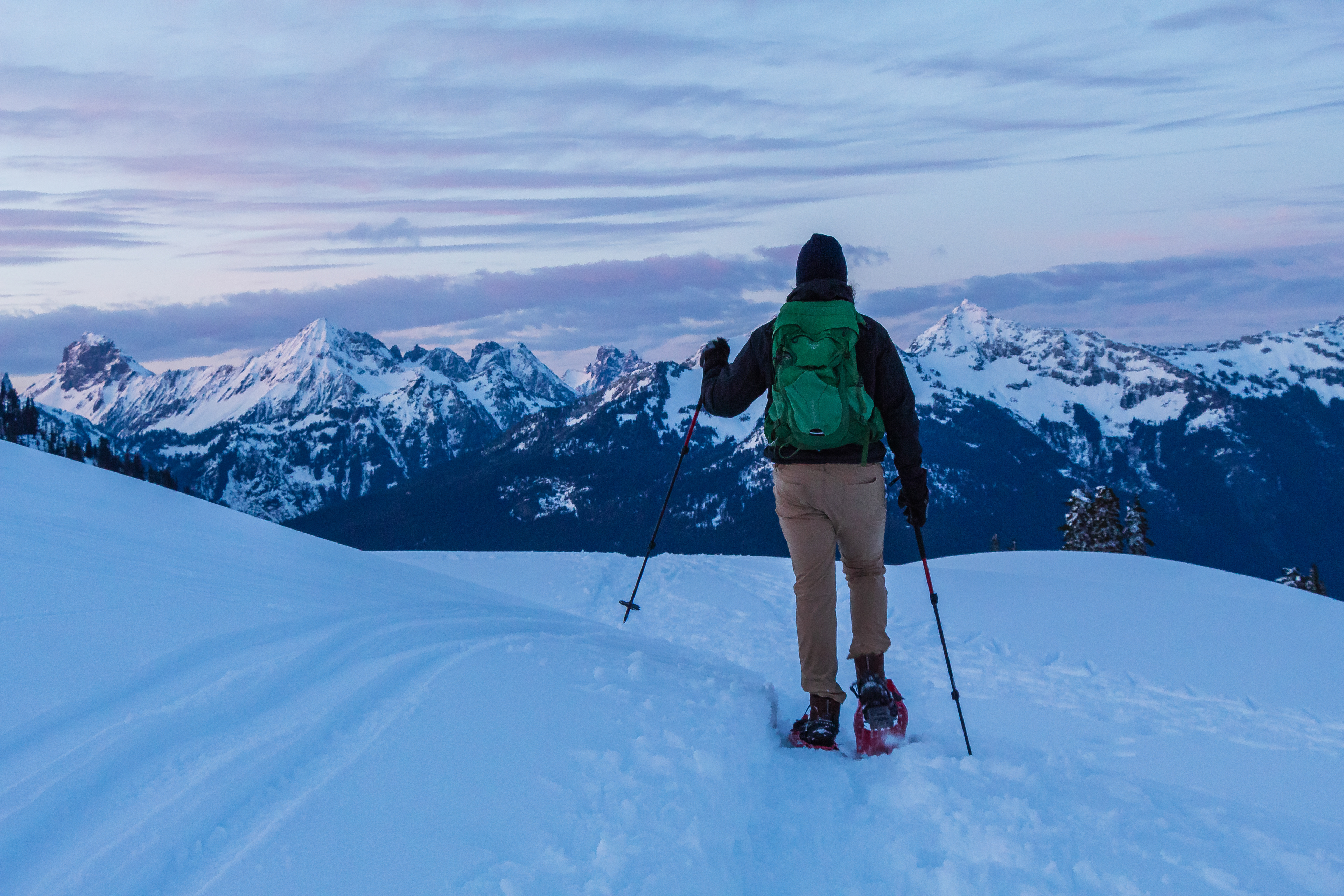
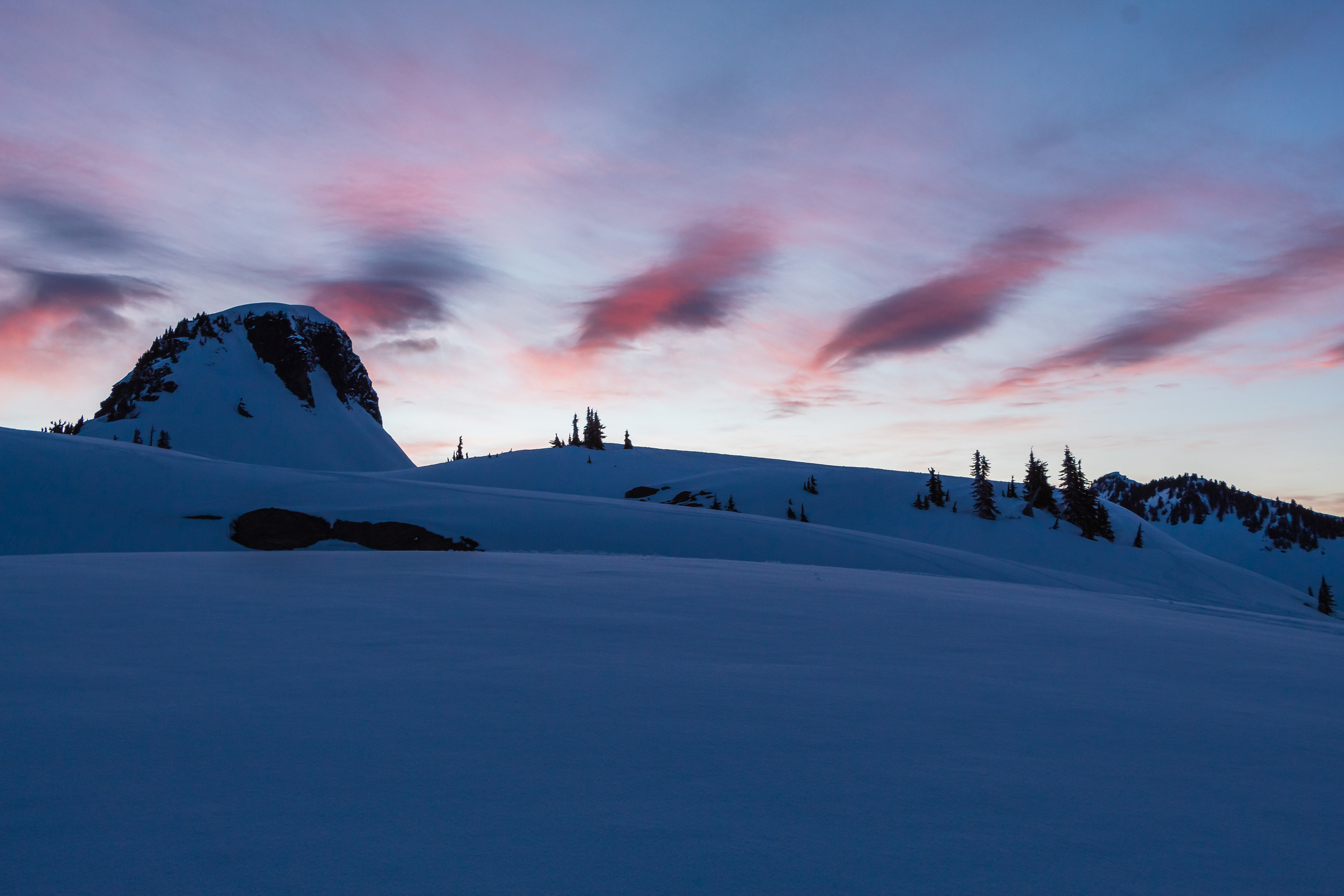
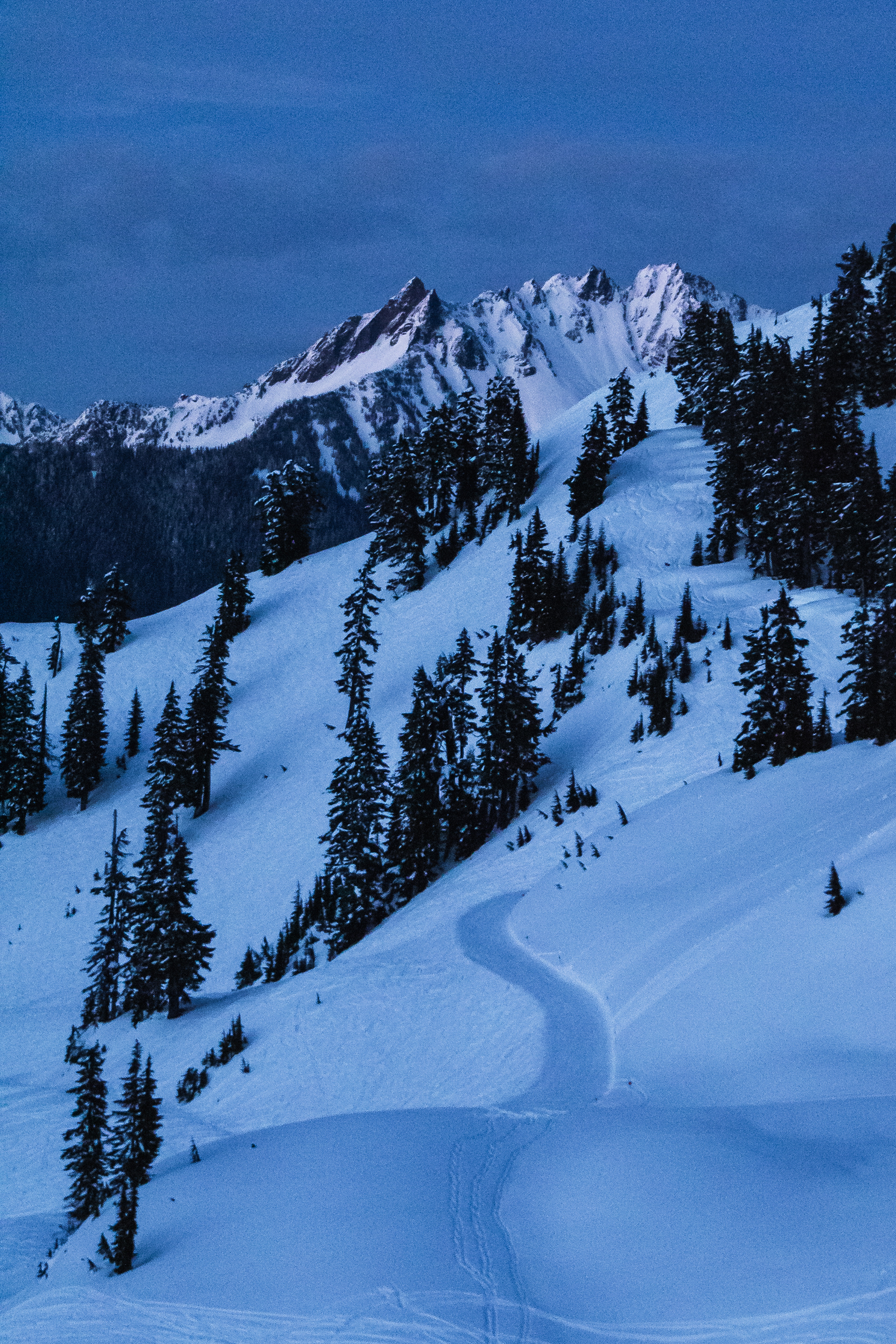

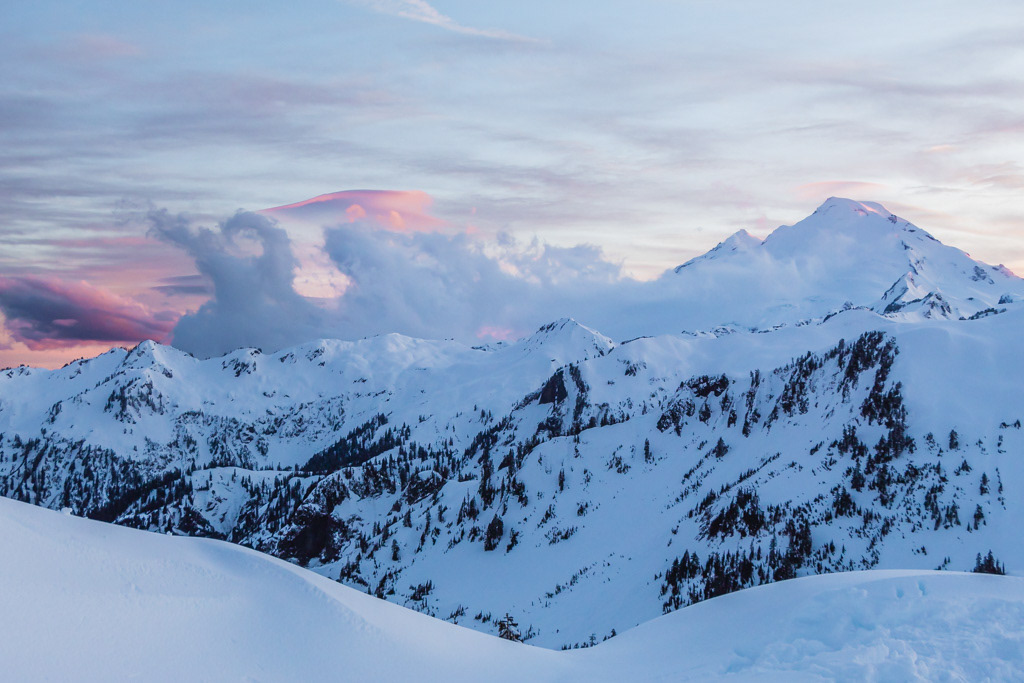
Franklin Falls | 6.9 miles | 816 ft
A Sno-Park Permit ($25/day or $50 for the season) is required. Franklin Falls is a wee trail that feels immersed in the forest, but in reality weaves between the threads of I-90 North and I-90 South near Snoqualmie Pass, never departing more than 1 mile from the highway. The gentle elevation gain and relative lack of avalanche danger make this a great first snowshoe - although do note that there is some avalanche danger at the basin of the falls. Like Gold Creek Pond, this trail is very popular and often packed down, making it doable with just microspikes. If you went to the trouble of renting snowshoes (as we did) and feel they weren't put to the test, you can take the less trafficked Wagon Wheel trail back, which may require breaking trail. The falls sometimes freeze over in winter, but don't believe the jaded trip reports that say they're not worth seeing if unfrozen; the landscape is stunning regardless.
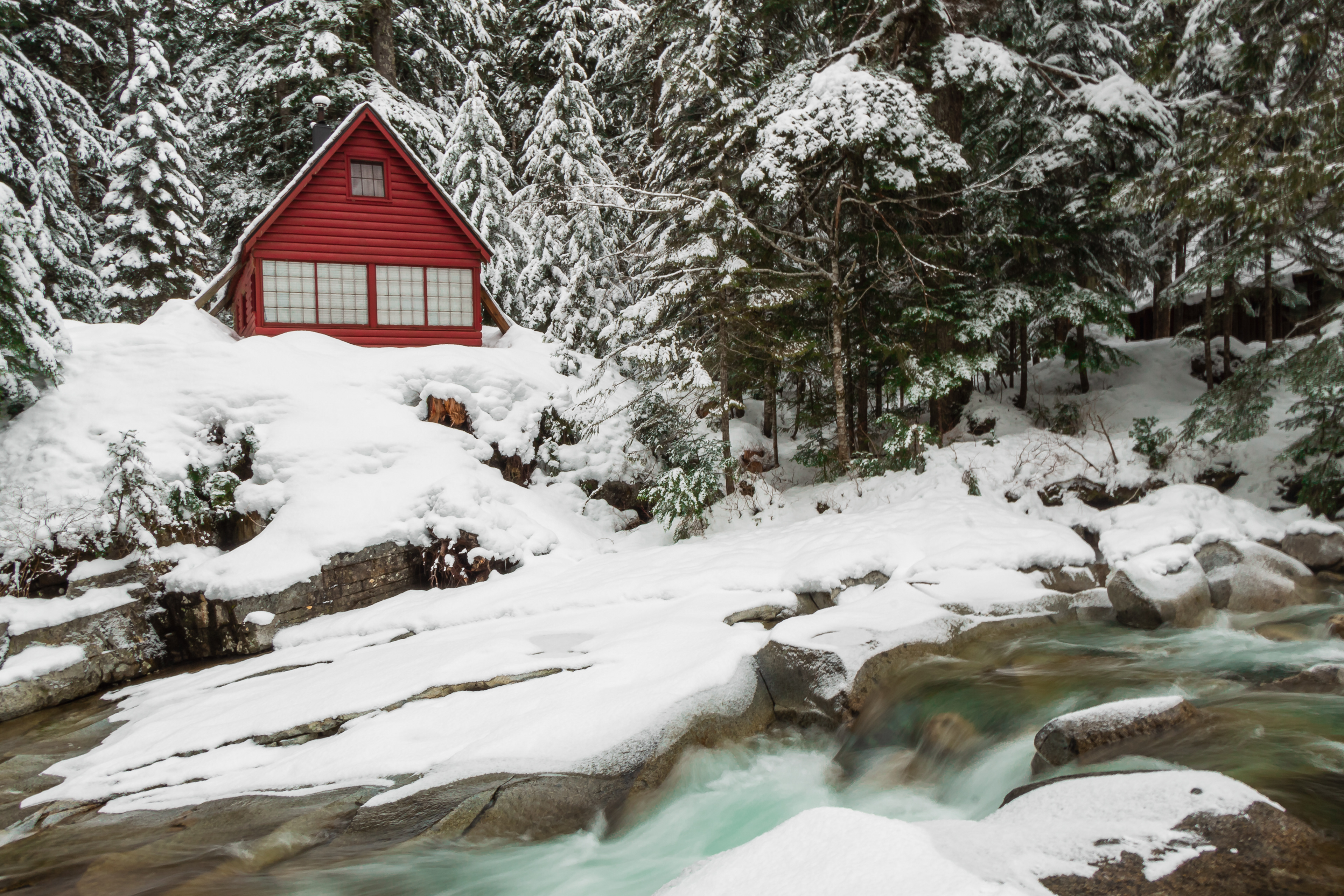
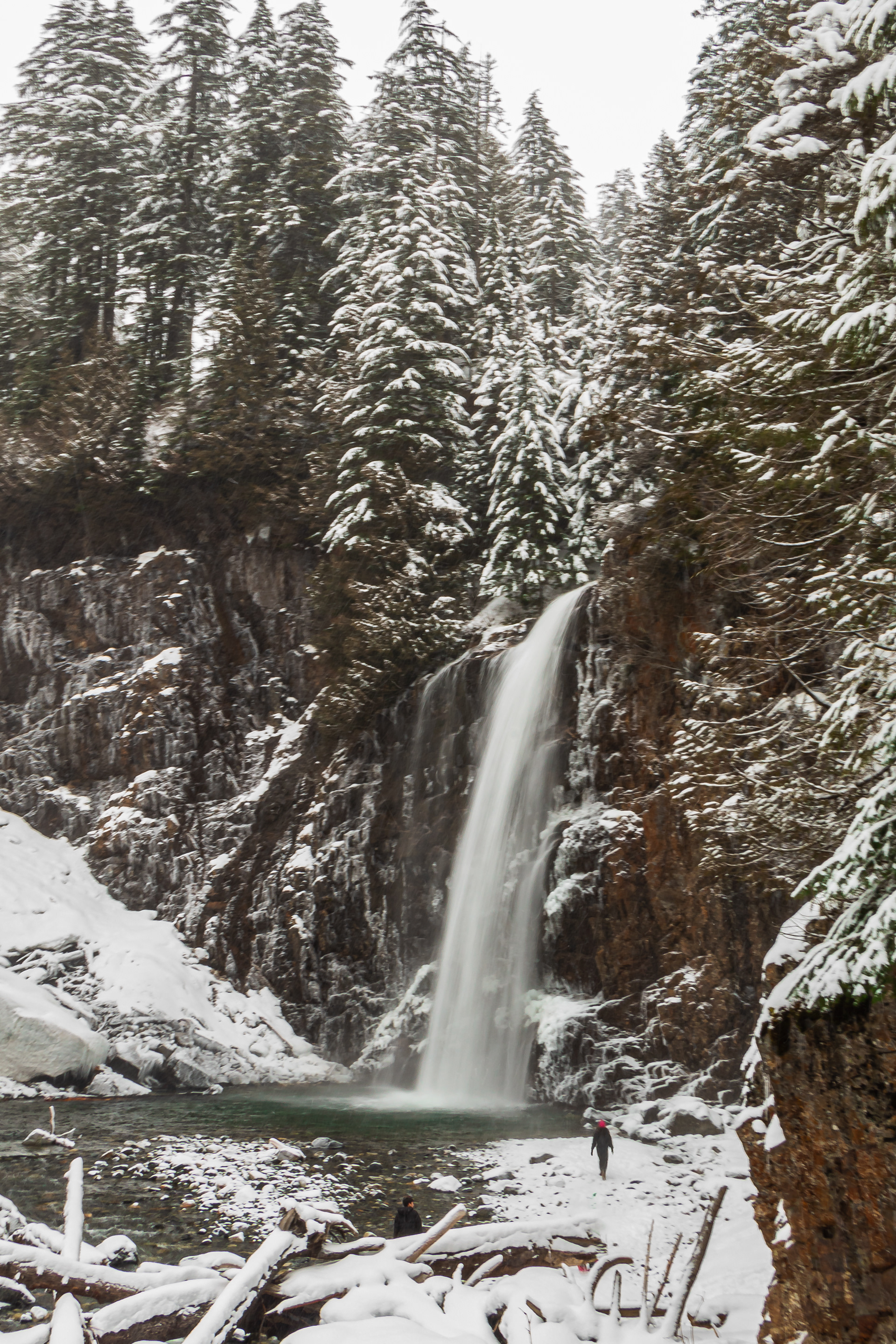
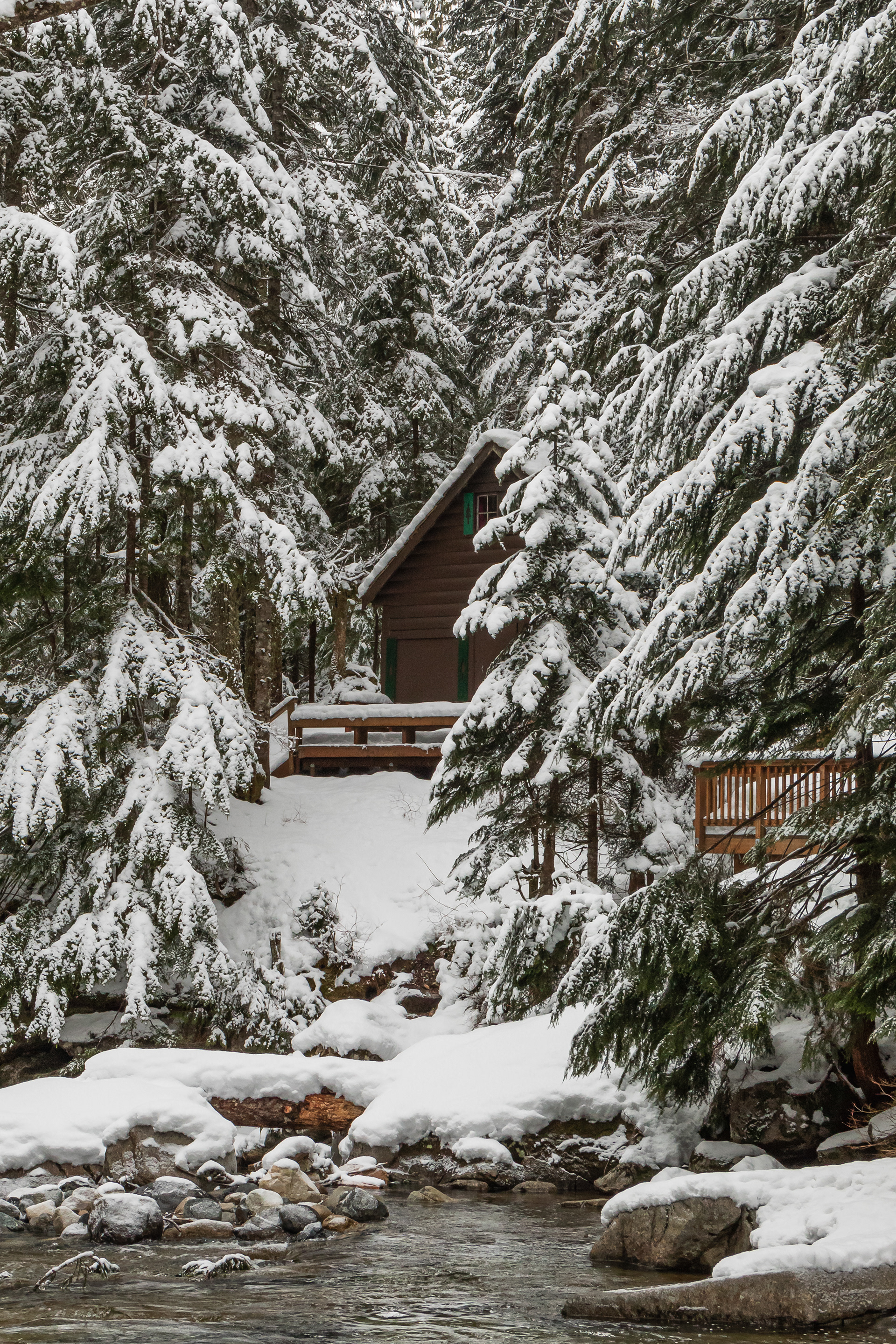
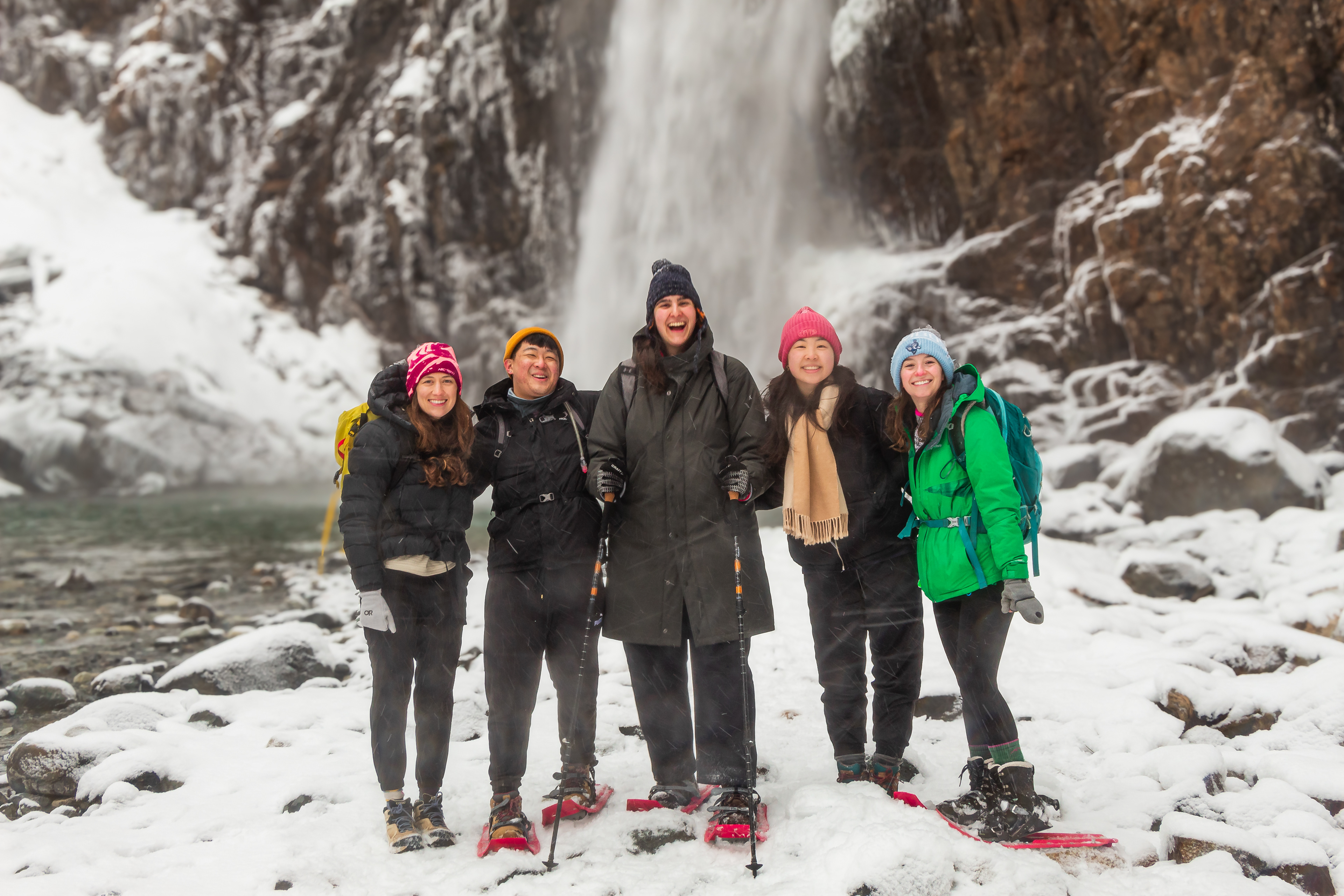
Snow Lake | 6.7 miles | 1,800 ft
Avalanche Risk. A Northwest Forest Pass ($5/day or $30/sesason) or America the Beautiful Pass ($80/year) is required.
As we've previously recapped, I am not a winter sport aficionado, and I have no intention of taking an avalanche AIARE class or putting myself in situations that require one. The extent of my avalanche awareness is checking the Northwest Avalanche Forecast , and proceeding to stay indoors when the danger scale is anything other than "low" 😂. We did this hike in late November, when the snowpack was still light (microspikes required, poles suggested, no snowshoes needed) and the avalanche risk was very low. I personally would not attempt this hike later in the year (or at the same time if we'd had significantly more precipitation in the fall).
Beyond witnessing the return of snow to the Cascades (whilst ideally avoiding avalanches), hiking Snow Lake in the "off season" buys you a reprieve from the crowds. Snow Lake is infamously the heaviest used trail in Washington; ~400 cars can reportedly be found at the trailhead during peak summer weekends. We first hiked this trail on an overcast Saturday in late September, which was busy but not unbearable. By the time we came back on Thanksgiving weekend, foot traffic had thinned considerably and no part of the experience felt "busy".
The hike can be extended to Gem Lake (10.0 miles, 2,700 ft gain) or even further to Lower & Upper Wildcat lakes (14.0 miles, 4,000 ft gain). We made it to Gem Lake during our September visit, and I particularly loved the section of the trail which loops around the east of Snow Lake as it ascends towards Gem. By November, however, the snow was knee-deep beyond Snow Lake and the call of leftovers at home was strong, so we did not continue onward.
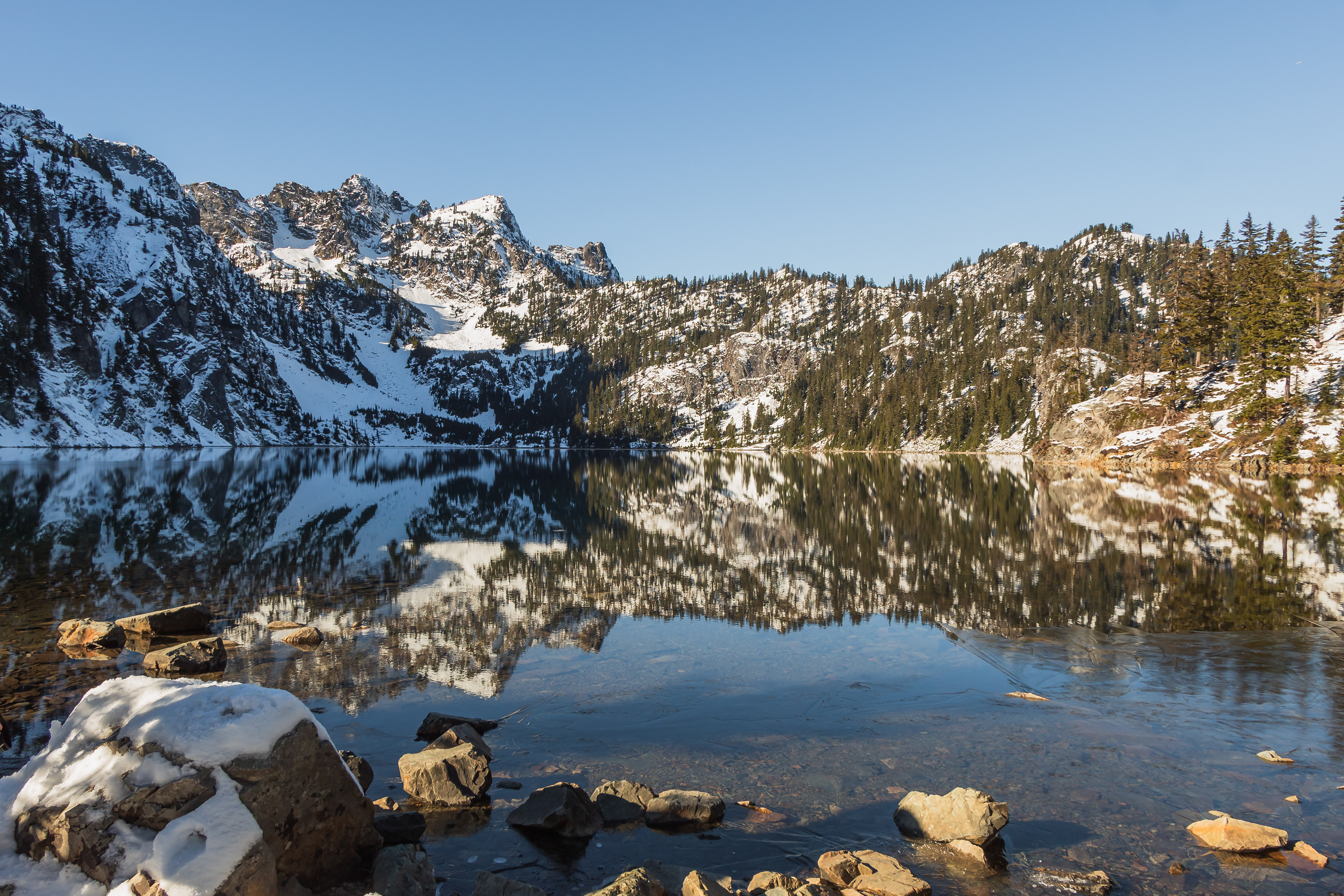

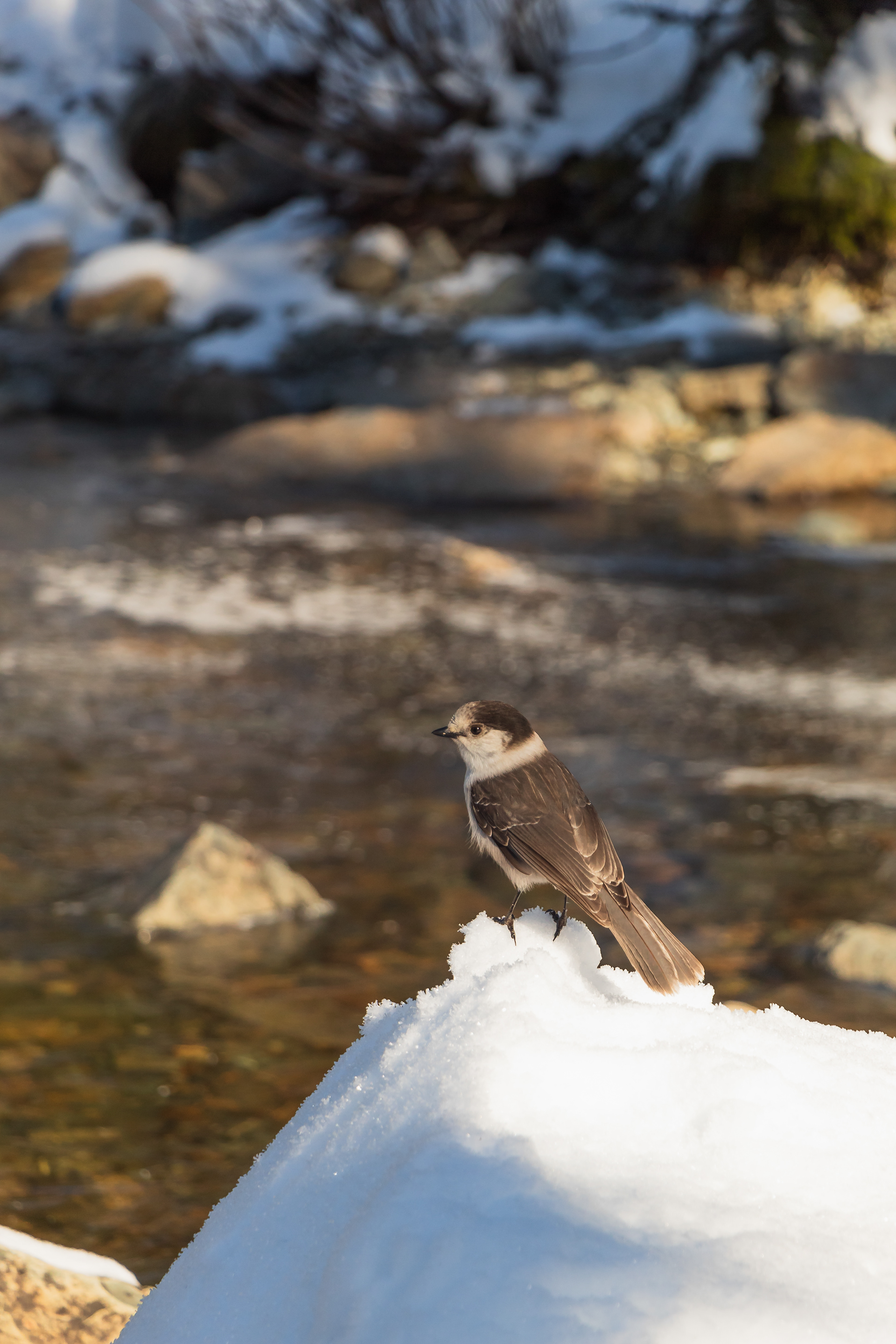
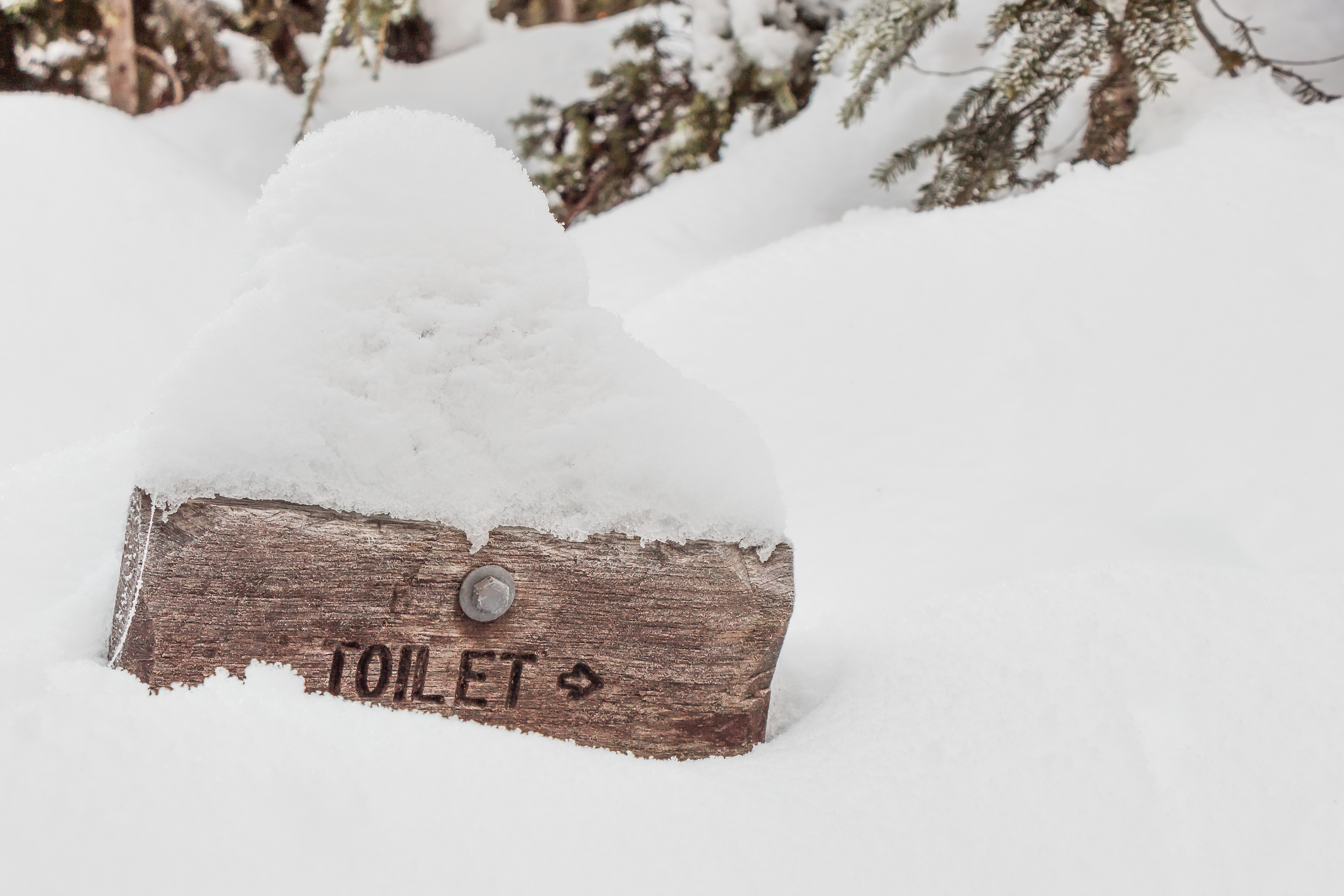

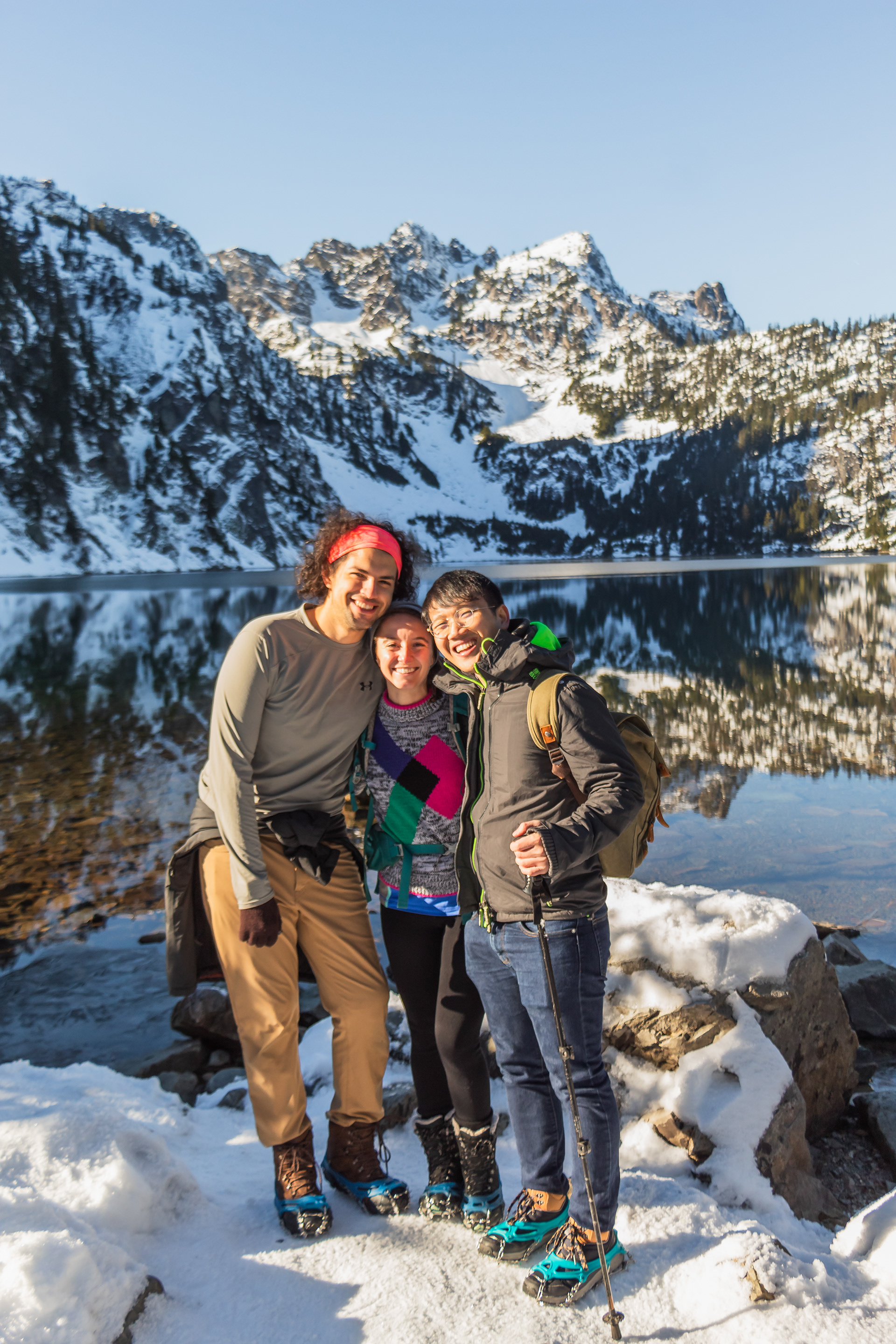
Blanca Lake | 7.5 miles | 3,300 ft
Avalanche Risk. A Northwest Forest Pass ($5/day or $30/sesason) or America the Beautiful Pass ($80/year) is required.
As with Snow Lake above, we did this hike in late October, when the snowpack was still light (microspikes required, poles suggested, no snowshoes needed) and the avalanche risk was very low. With my risk tolerance (almost none lol) and level of winter knowledge (also very low) I personally would not attempt this hike much later than November. Beyond safety concerns, visiting alpine lakes in late fall also means the water is not yet frozen: the contrast of snow-dusted peaks and not-yet-frozen lakes is one of my favorite combinations, and is particularly stunning along Blanca Lake's turquoise shores.

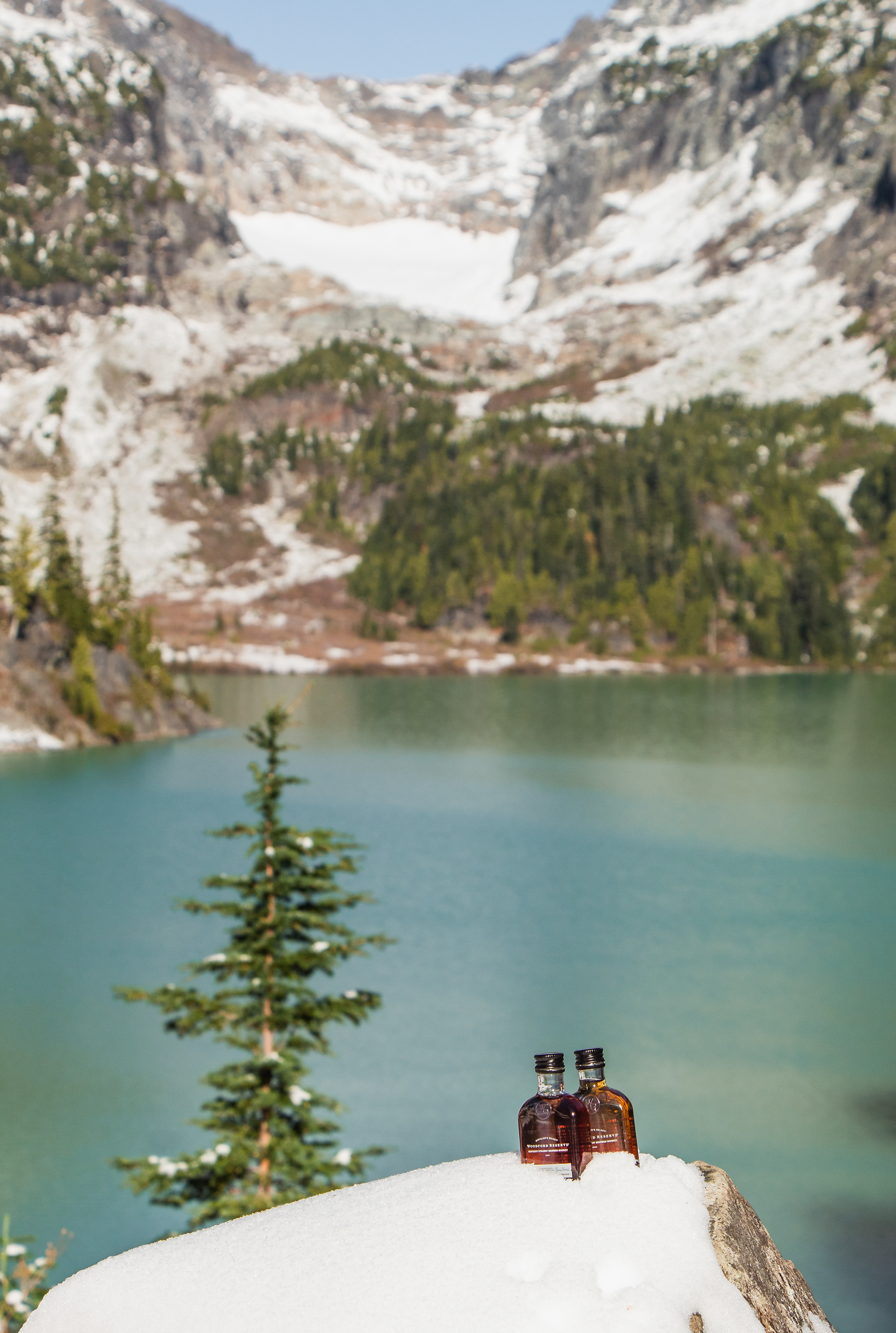
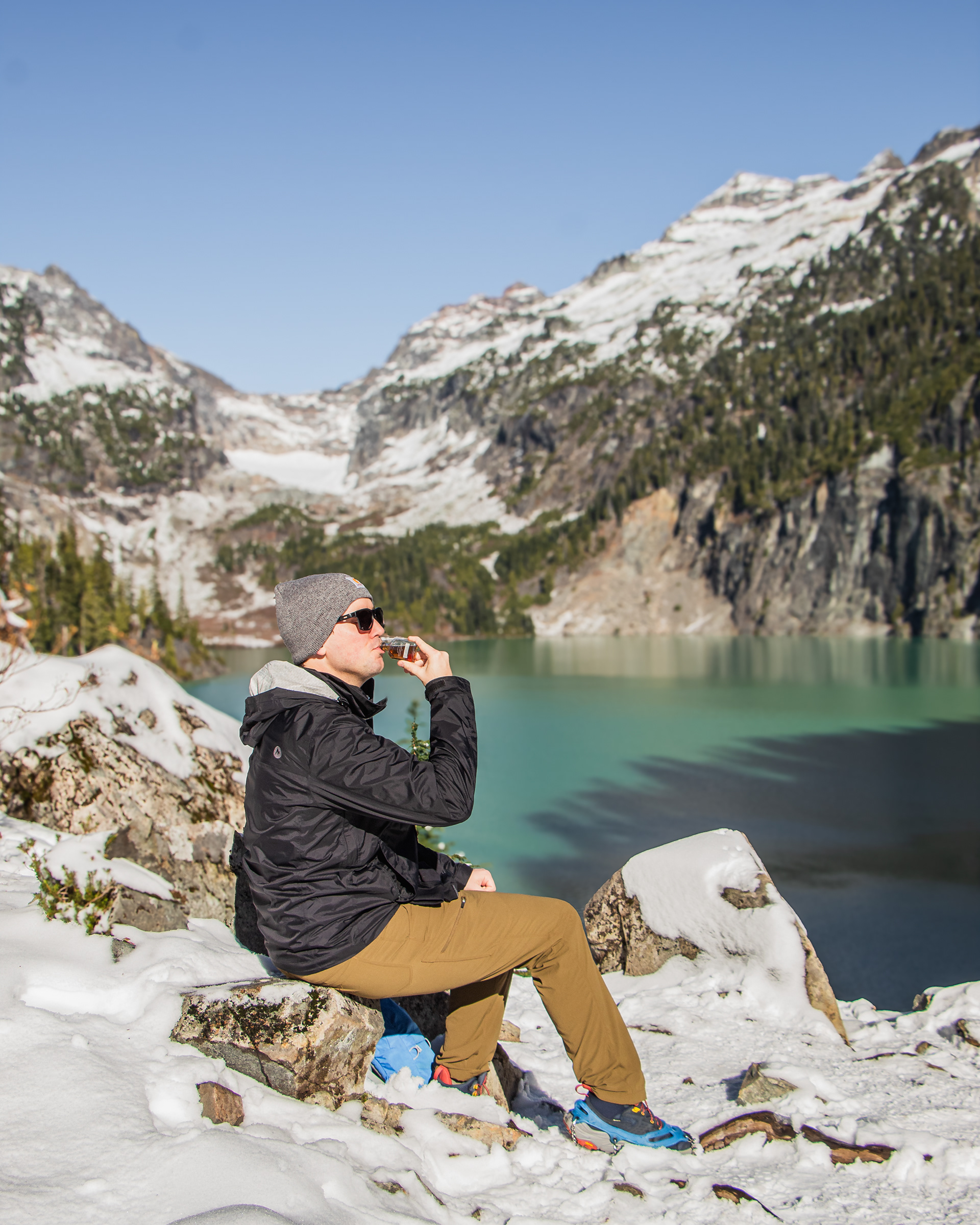
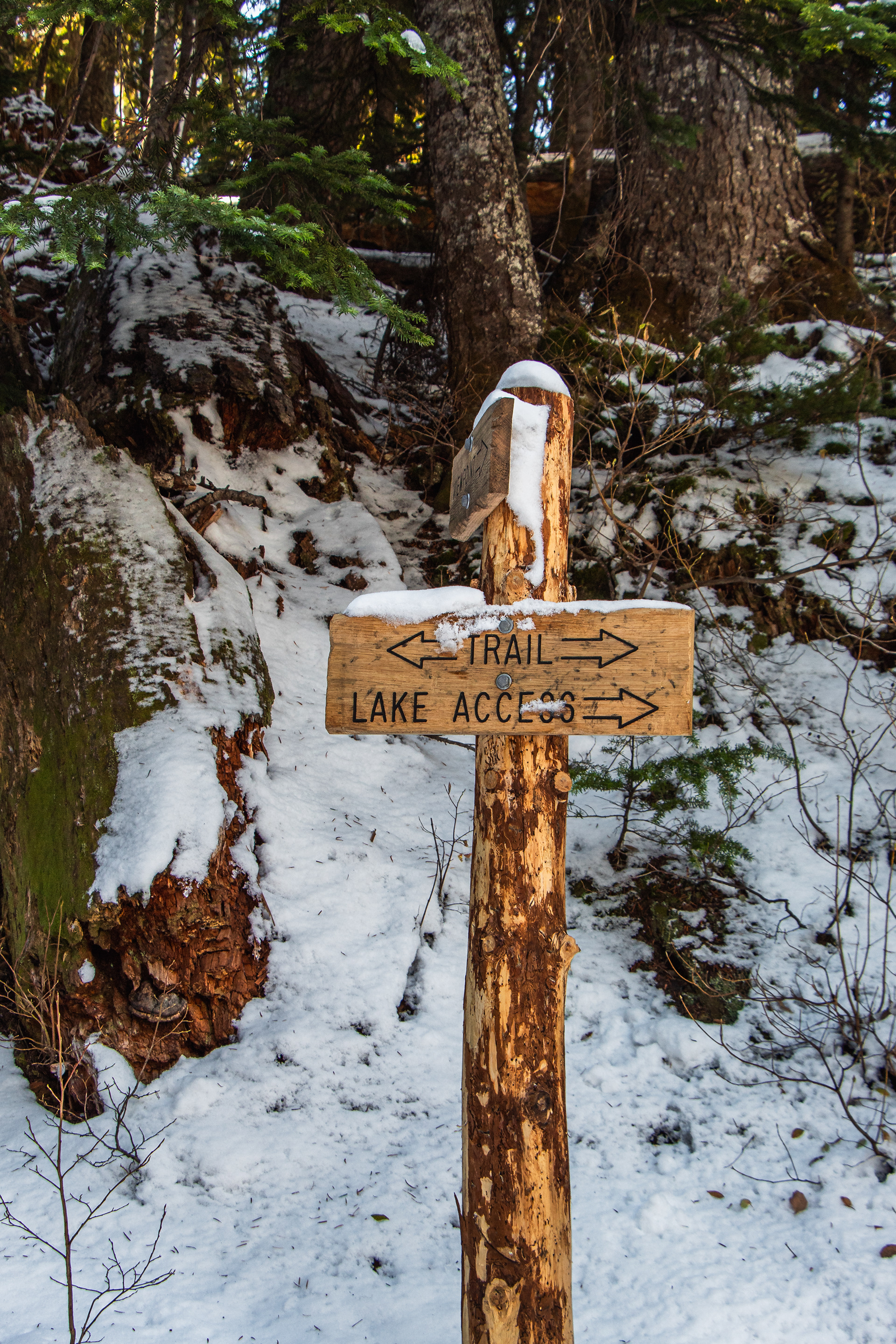

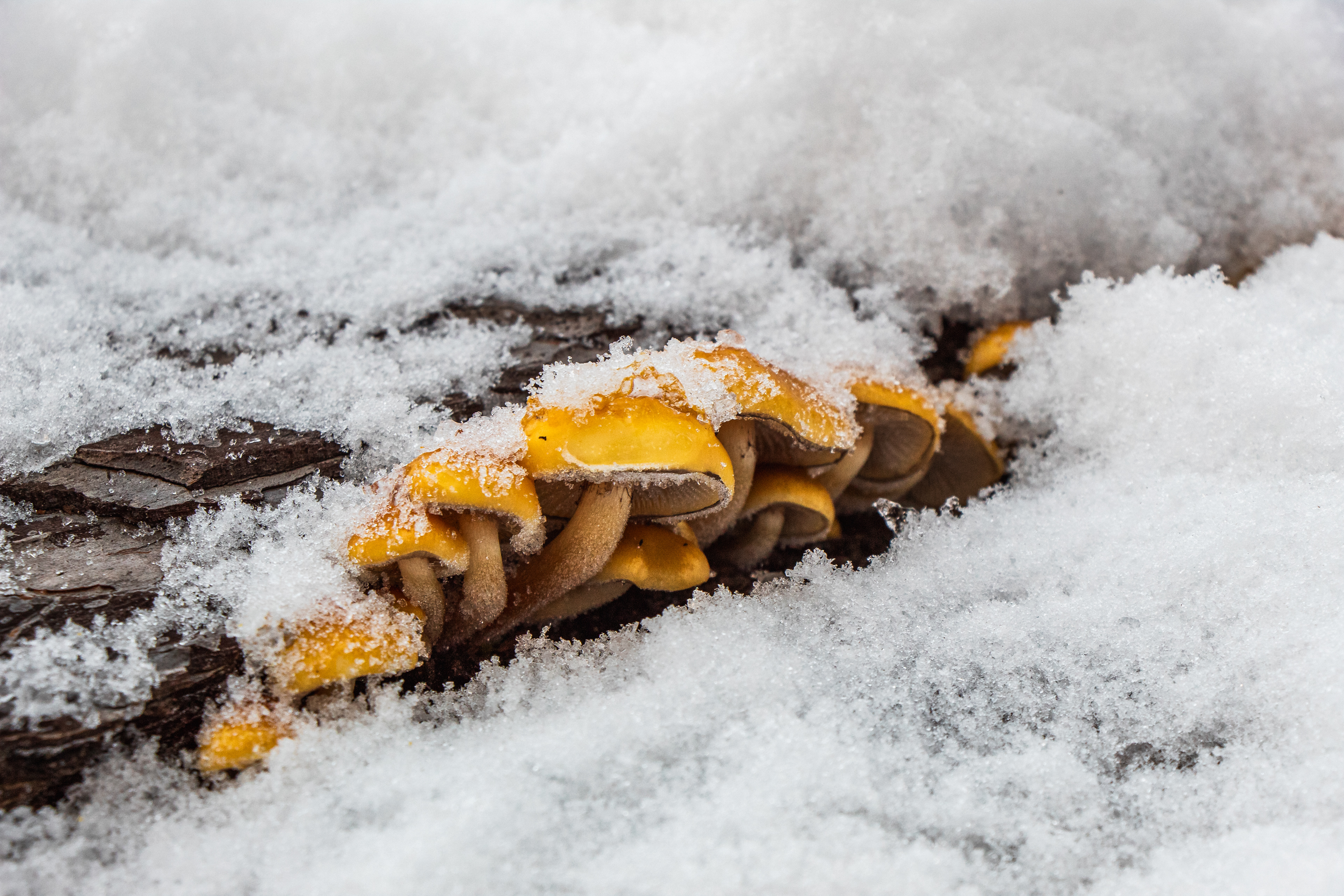
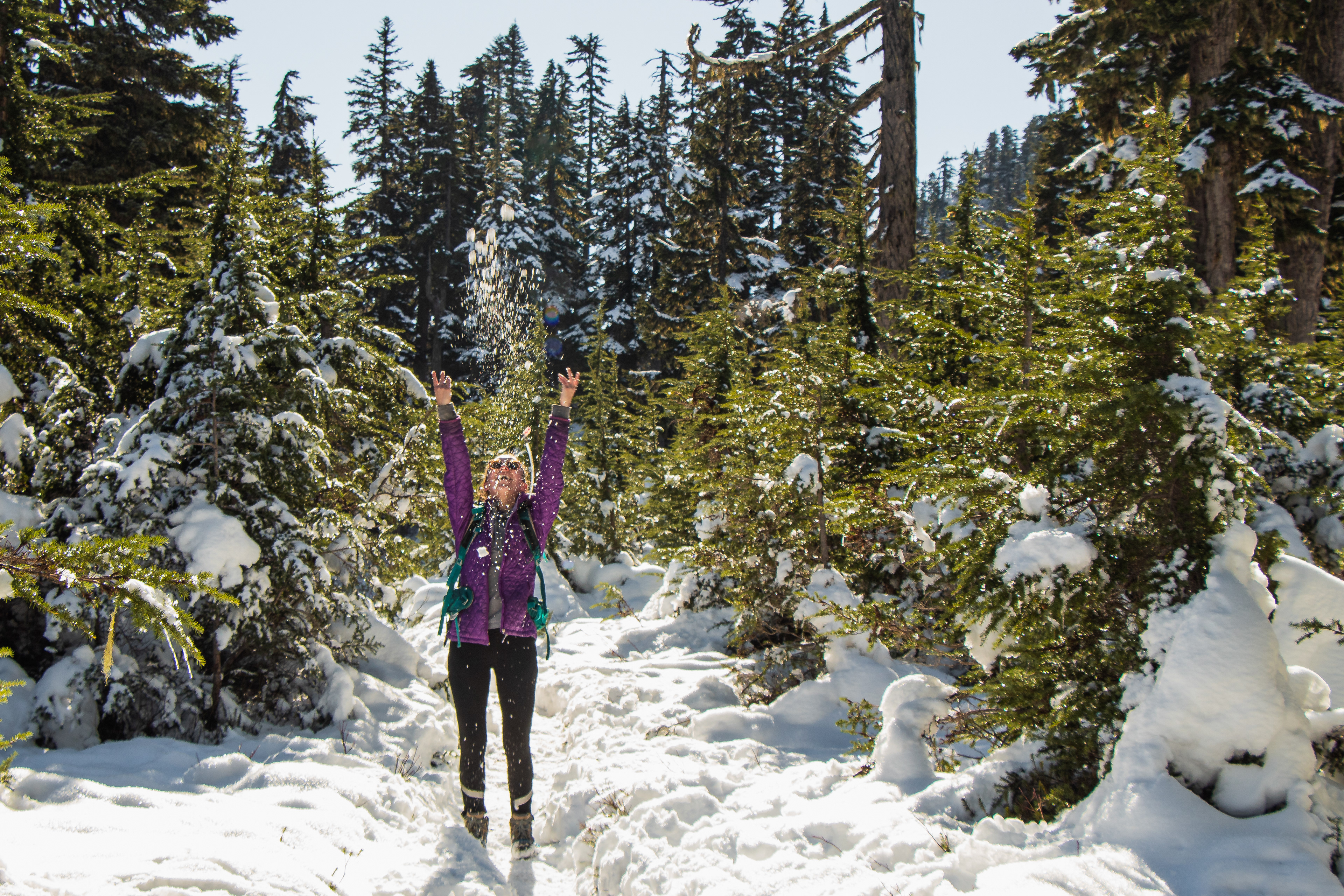
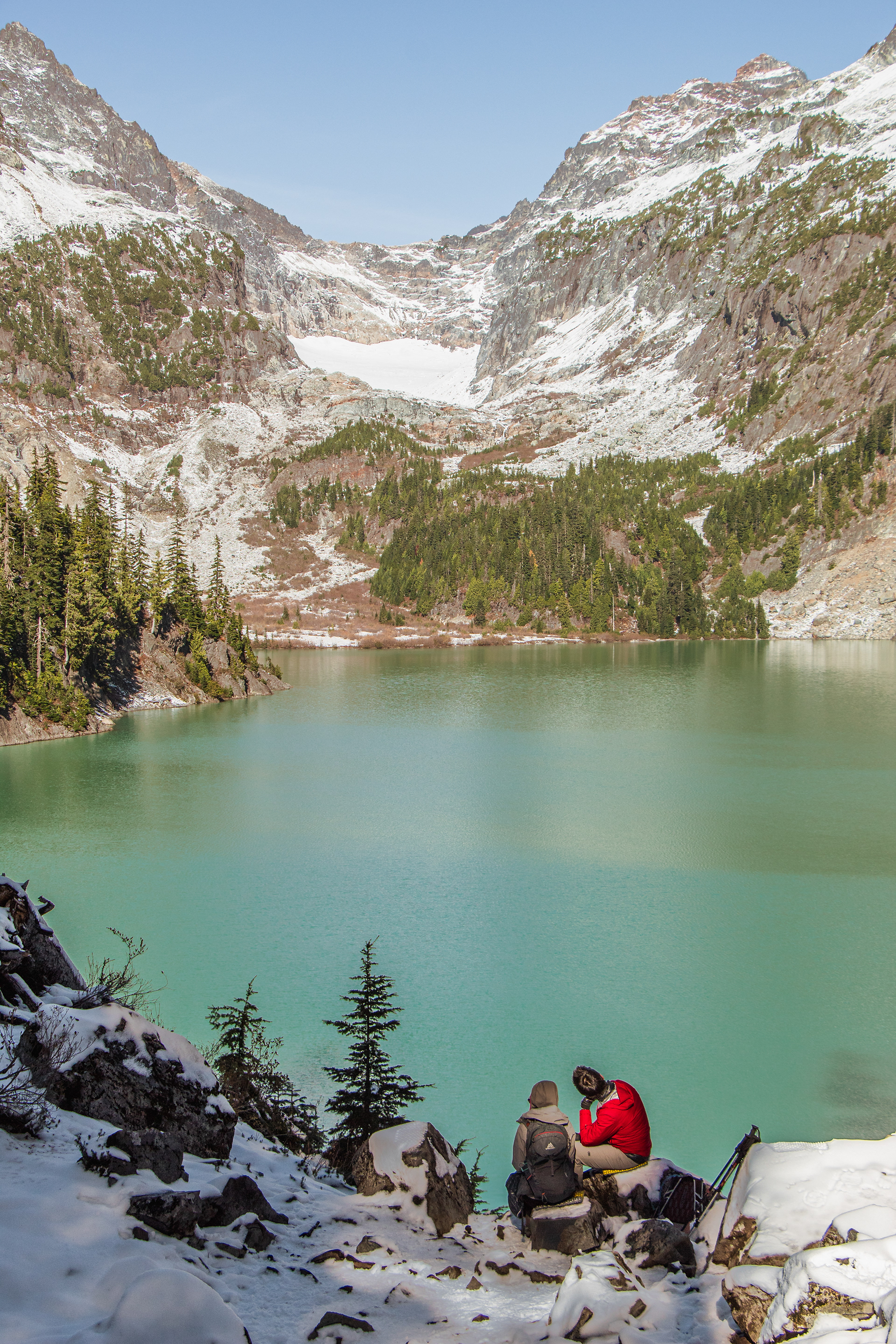
Kendall Peak Lakes | 9.0 miles | 1,700 ft
The snowshoe trail to Kendall Peak Lakes departs from the same trailhead as Gold Creek Pond. A Sno-Park Permit ($25/day or $50 for the season) is required to park at the trailhead. While the trailhead gets packed, the foot traffic to Kendall Peak Lakes is considerably lighter than Gold Creek Pond, and thins out the further along you go. Snowshoes are definitely recommended for this one, but depending on how recently it snowed you may be able to get by with microspikes. This trail theoretically doesn't traverse avalanche terrain, but I was hiking solo (which always makes me more risk-averse than I already am) and waited for a sunny weekend in February with low avalanche risk just to be extra cautious.
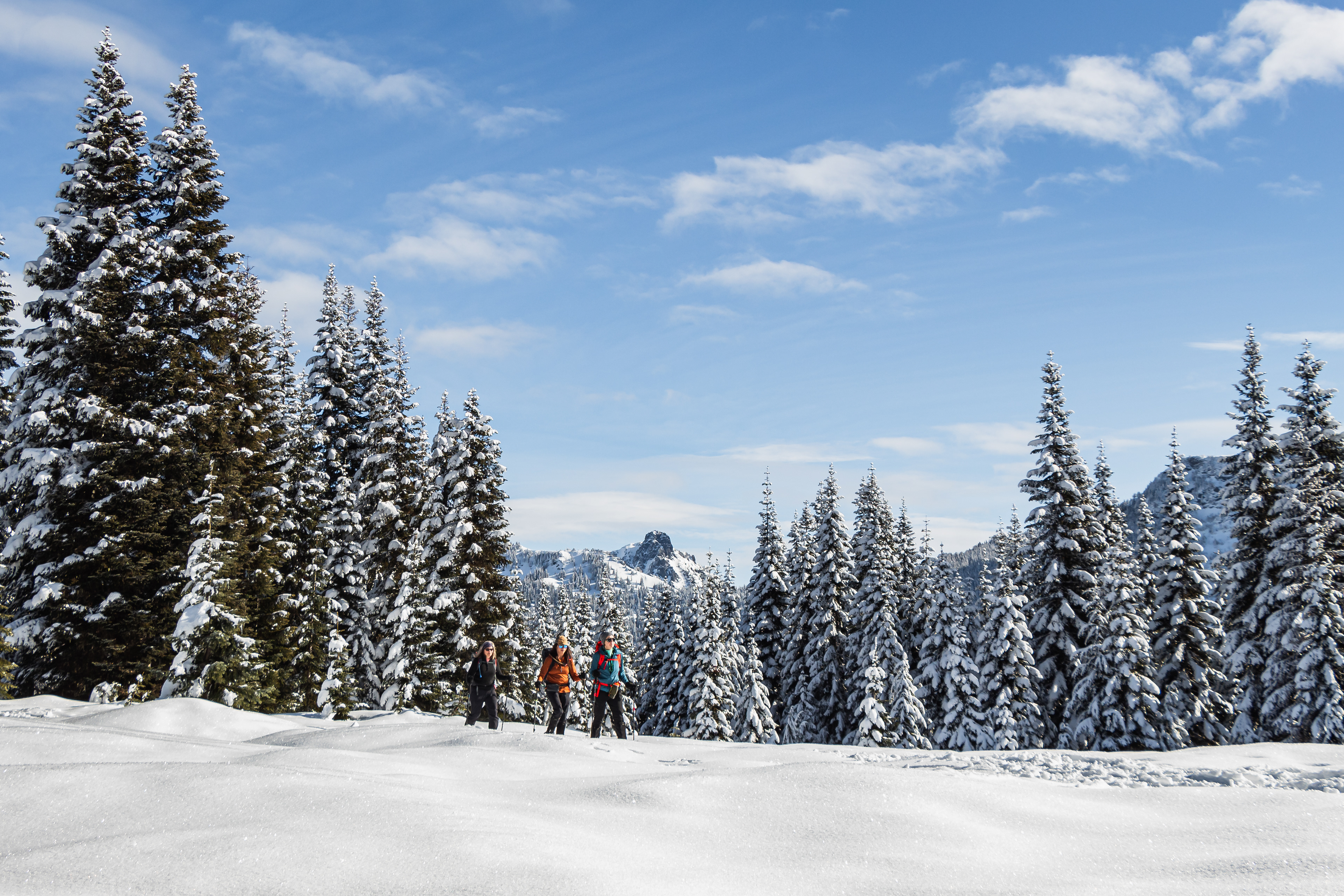

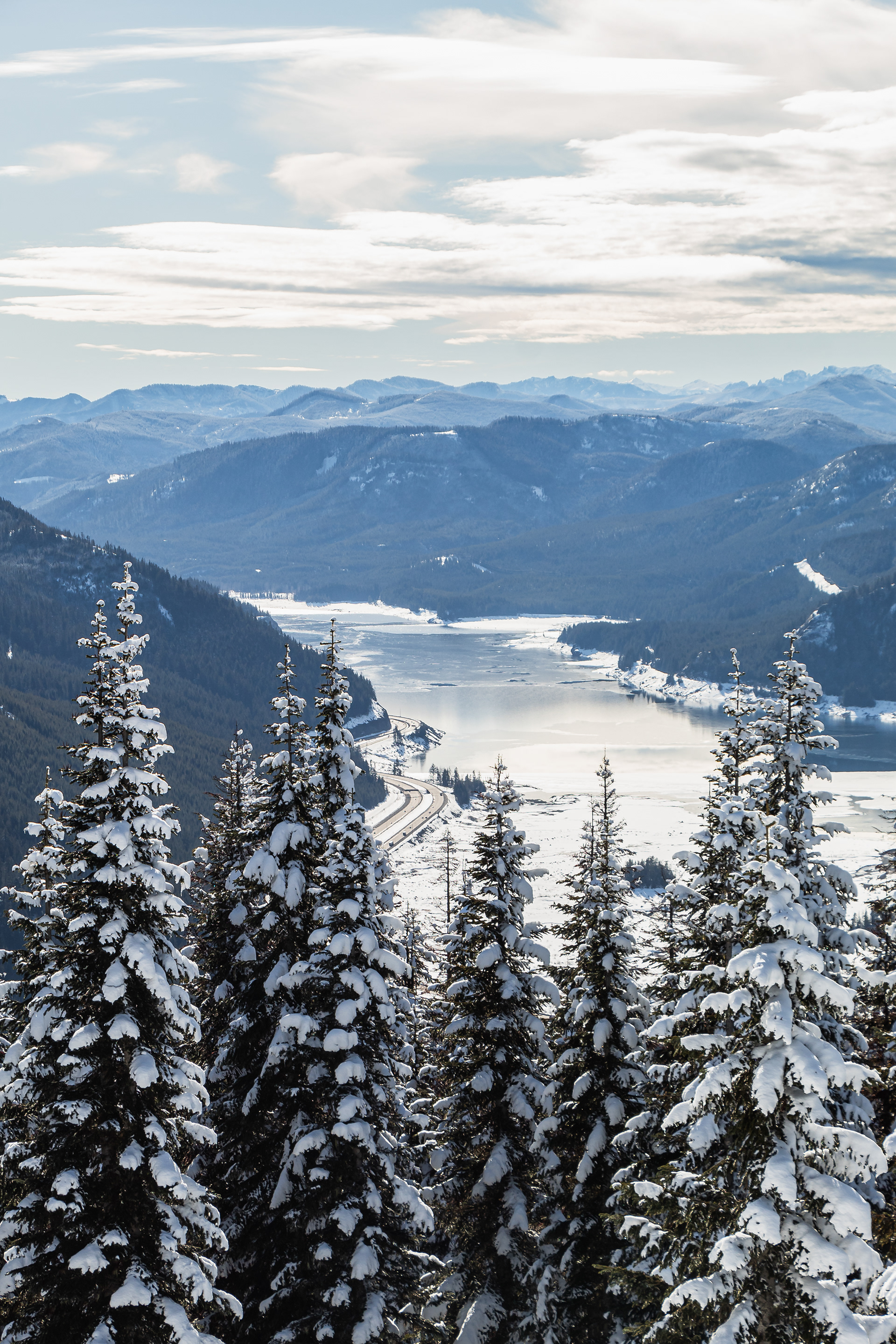
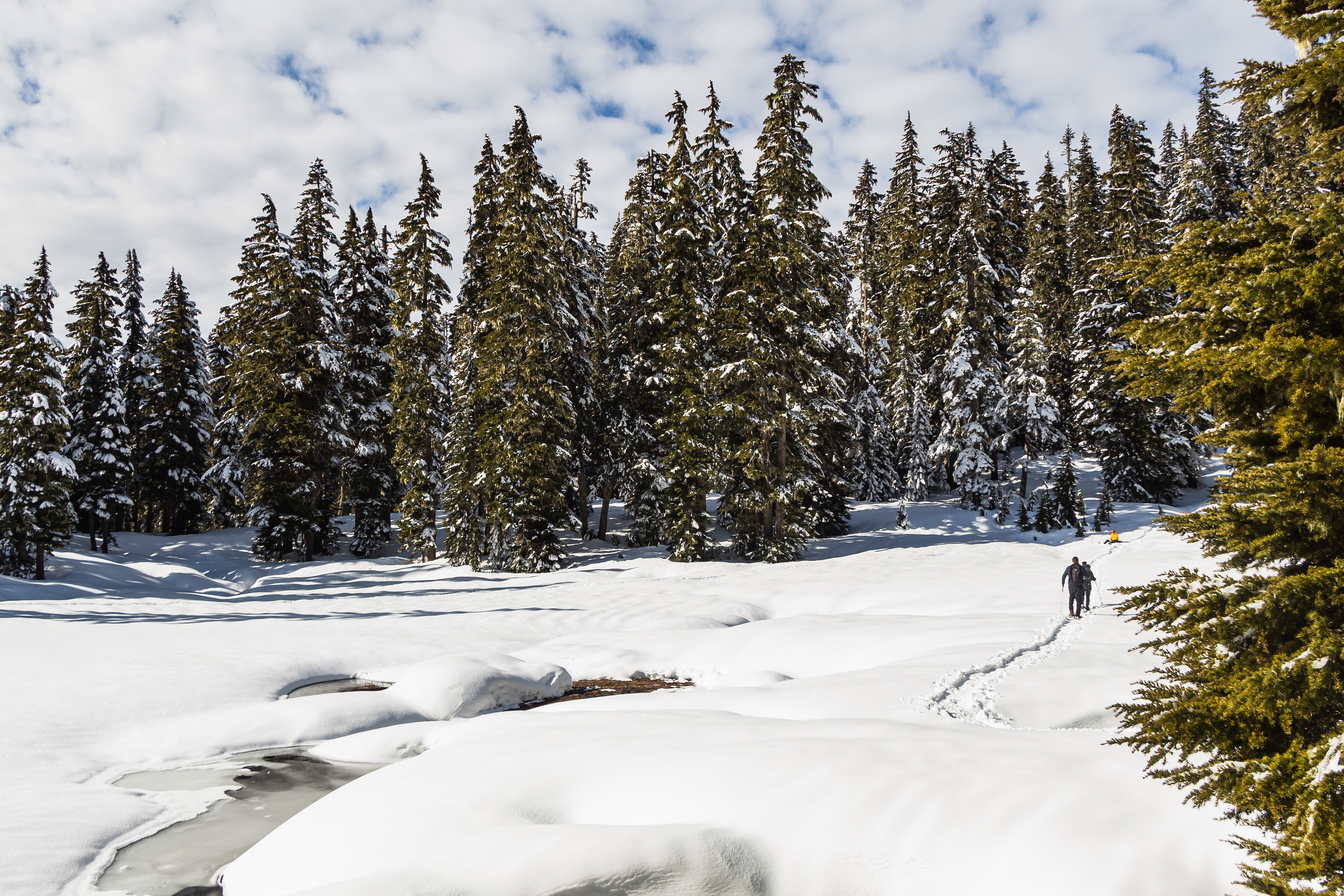

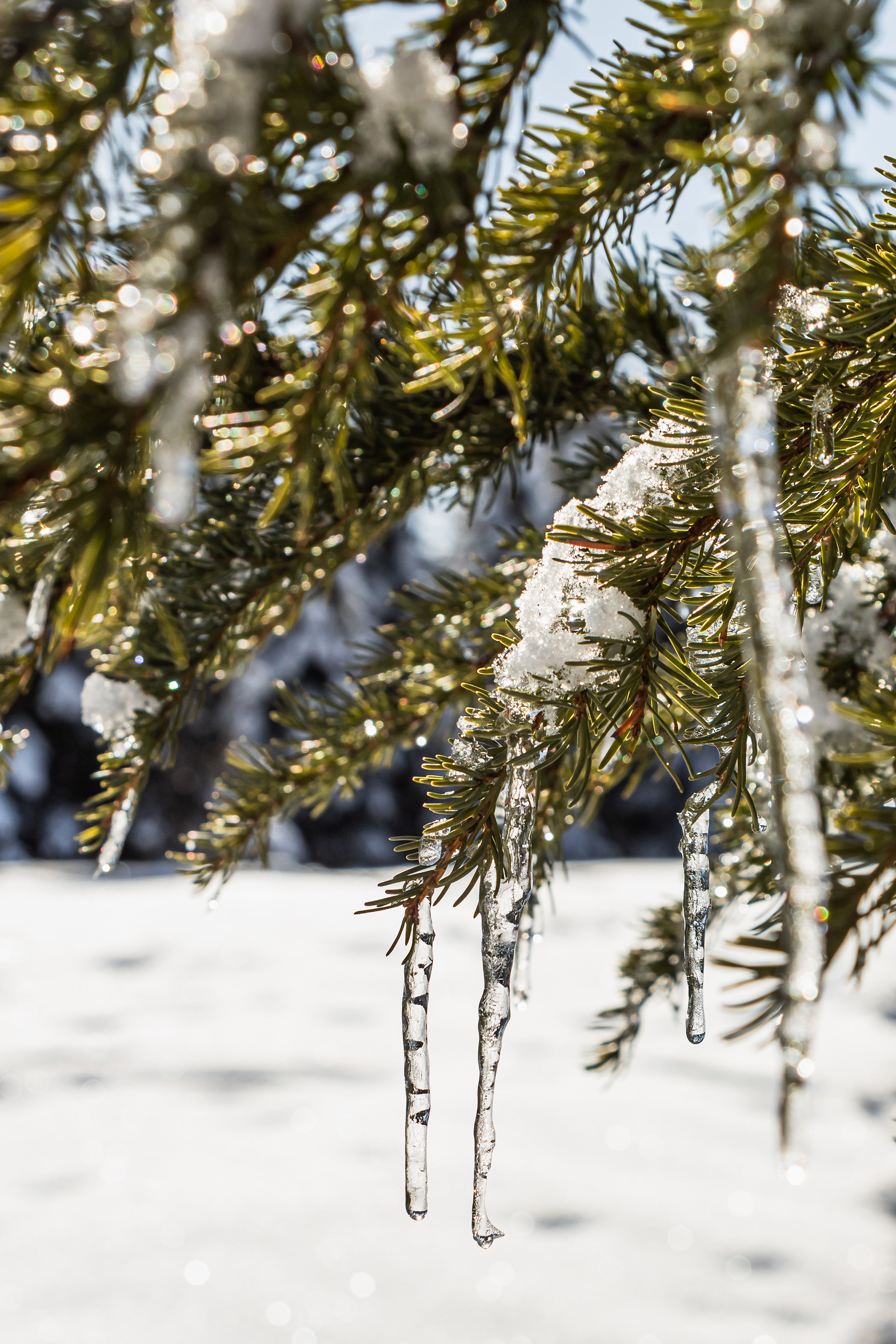
Cross Country Skiing in the Methow Valley
Since moving to Washington, I've heard revered whispers about the world class skiing in the Methow Valley.
As someone who has cross country skiied only a handful of times in my life, I don't exactly need "world class" trails - indeed, I'm quite incapable of skiing many of these world class trails. But the Methow Valley proved marvelous for novices and experts alike. Should you find yourself in the valley, the Methow Valley Ski School & Rental (MVSSR) provided immaculate equipment and expertise, completely re-shaping our game plan with their knowledge of trail conditions and upcoming weather windows.
An important aside: the Mazama Store pastries are as world-class as the skiing. They are so phenomenally good we bought 17 pastries - 17!! - in our 3 day stay, and spent a good chunk of our visiting hypothesizing conspiracy theories about how the best bakery in America cropped up in a town with 149 residents.
Lower River Run & Jack's Loop | 7.3 miles | 383 ft: A gorgeous, mellow trail through valley fields with stunning views of Goat Wall, Last Chance Point, and the surrounding North Cascades. Great for, as we called ourselves, "advanced beginners" - folks who've been on XC skis before but have no idea what to answer when the MVSSR folks ask you "skins or scales?" (The answer is scales.) This trail kicked off what became known as the weekend of Christmas miracles, which included ample sun, only seeing two other folks on trail (mid-March Methow trips during a year of low snowpack meant we had solitude almost everywhere), and spotting a bald eagle mere moments after Tucker mentioned he'd never seen one.
Heifer Hut Ski Tour | 12.9 miles | 1568 ft: The rendezvous mountain huts are back-country, ski-in huts that are part of the Methow Valley trail system. Almost all of them require intermediate and advanced-level trails to reach, and thus were nowhere on my bingo card for this trip. Alas, due to the poor snowpack and forecasted rain at lower elevations, we decided to take our chances with a trail substantially harder than anything any of us had ever attempted before. We reached the Heifer Hut - albeit out of breath, covered in sweat, and exhausted. Hut etiquette says that you must be invited inside by the group who has reserved it for the night. The kind Saturday night residents of the Heifer Hut invited us in to re-warm our bones by the fire, and as we snacked on sea salt baguette, manchego, and spruce tip jam it began to snow, coating the trail in 1/2" of fresh powder that absolutely transformed the downhill experience. Refueled, we cautiously alternated blasting and pizza'ing our way downhill. There was something glorious about the piercing "whoops" of our group riniging out through an otherwise silent forest; watching someone come around the same bend or icy patch you'd just tackled and feeling a sense of accomplishment - not for conquering mother nature, but for simply being allowed to coexist in and experience such magnificence. I think we all arrived back at the trailhead convinced the Methow Valley may be the most magical place to exist.

